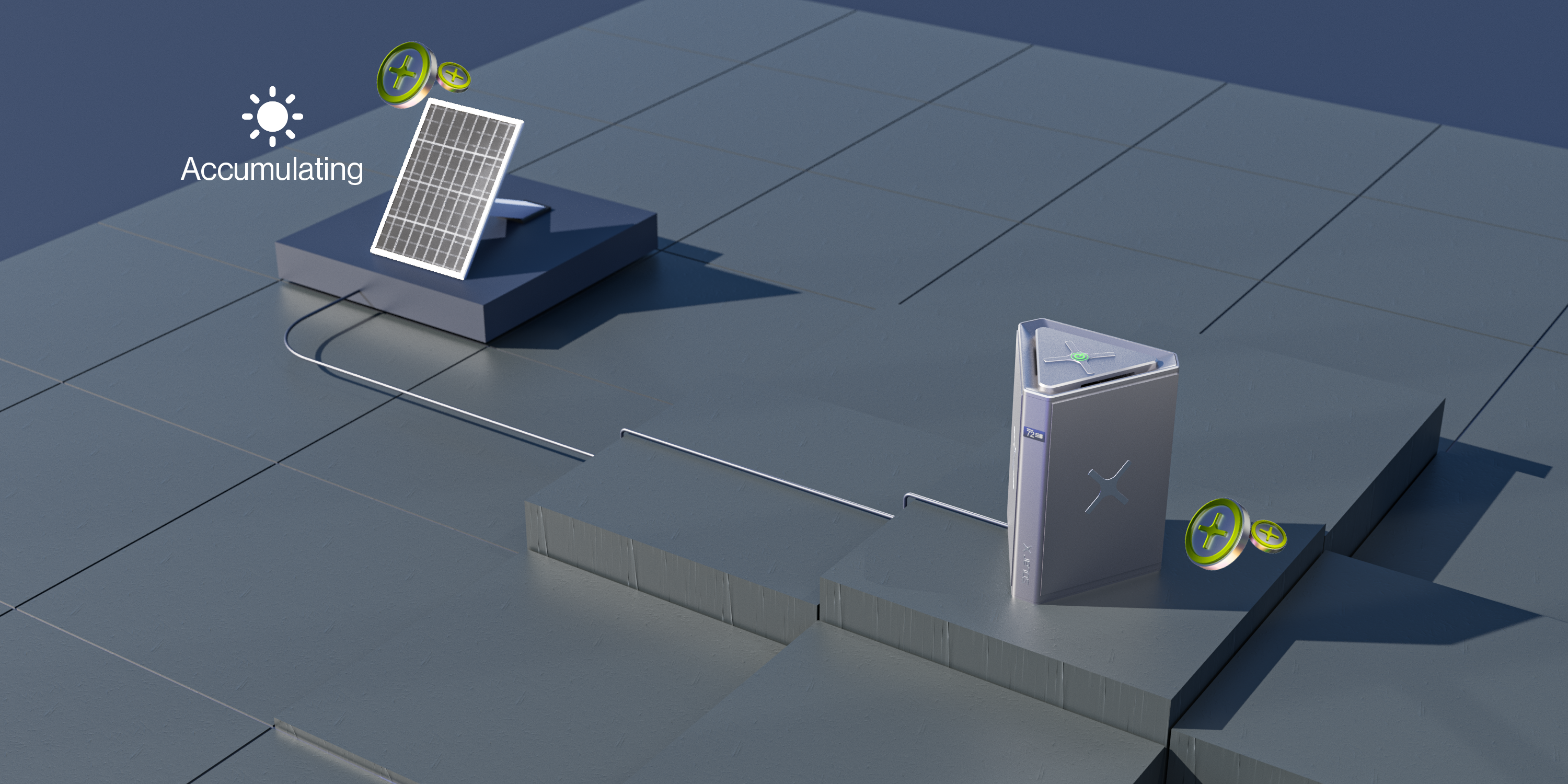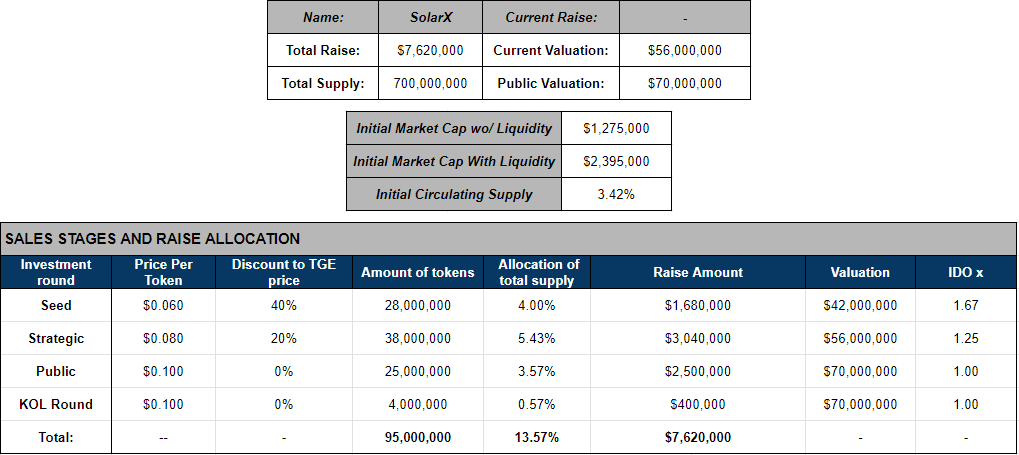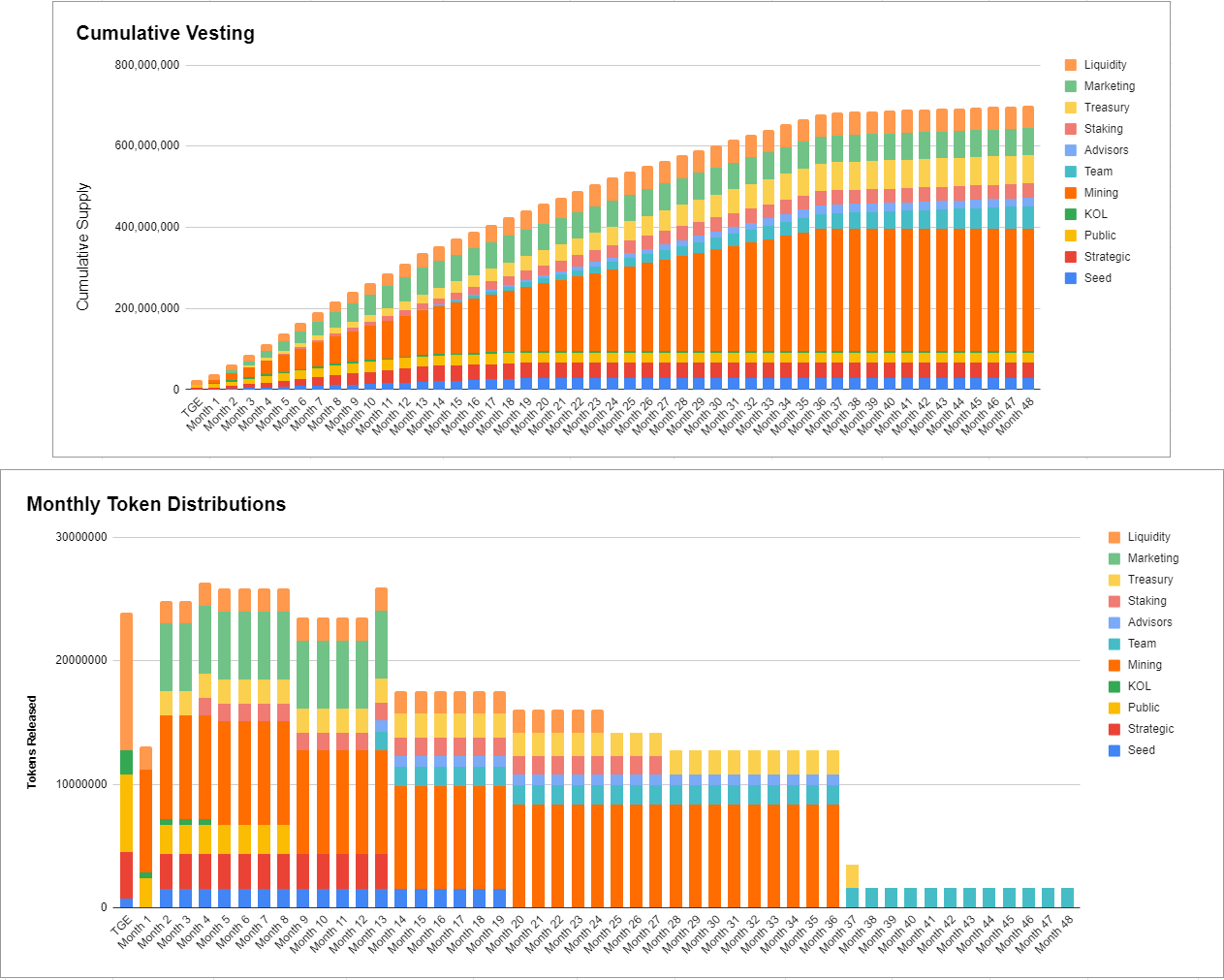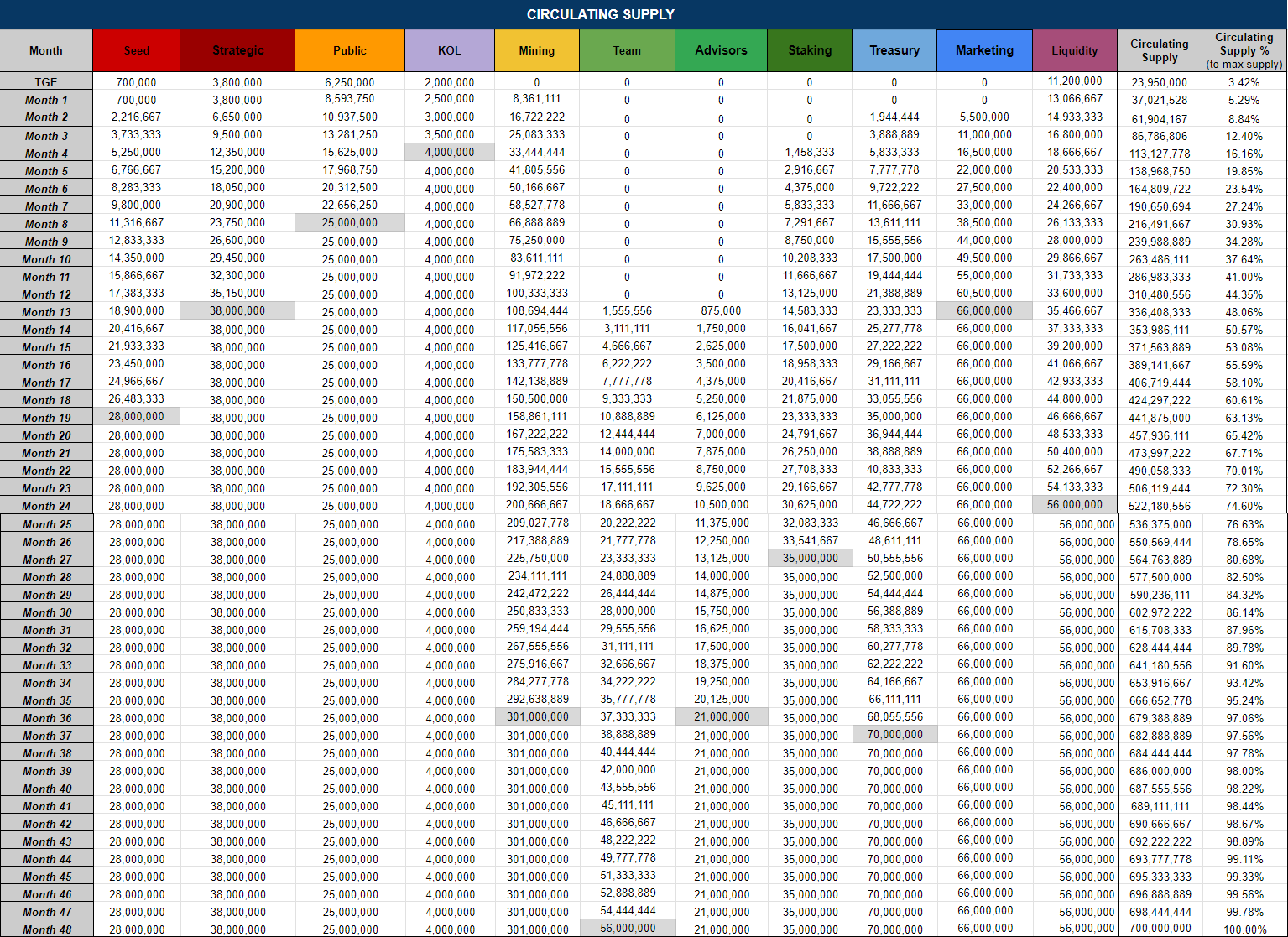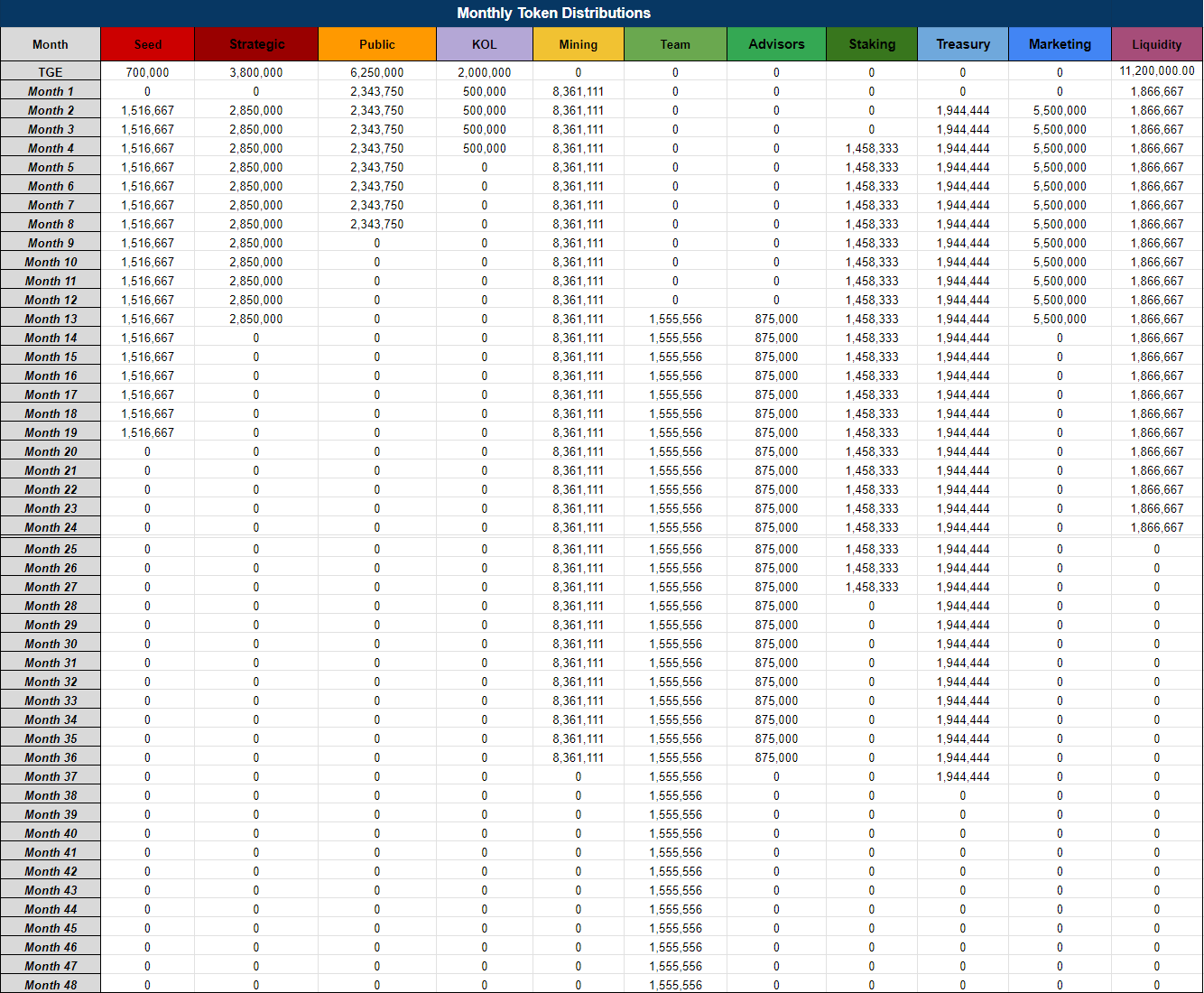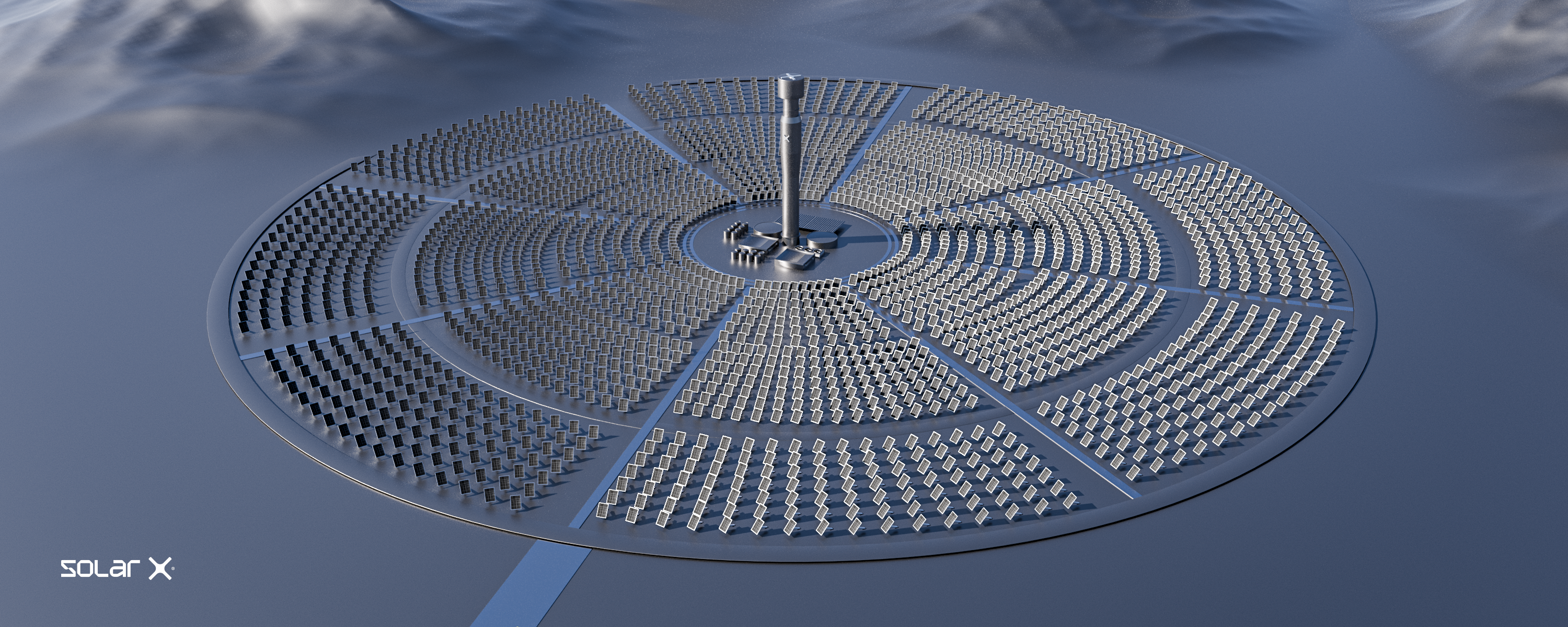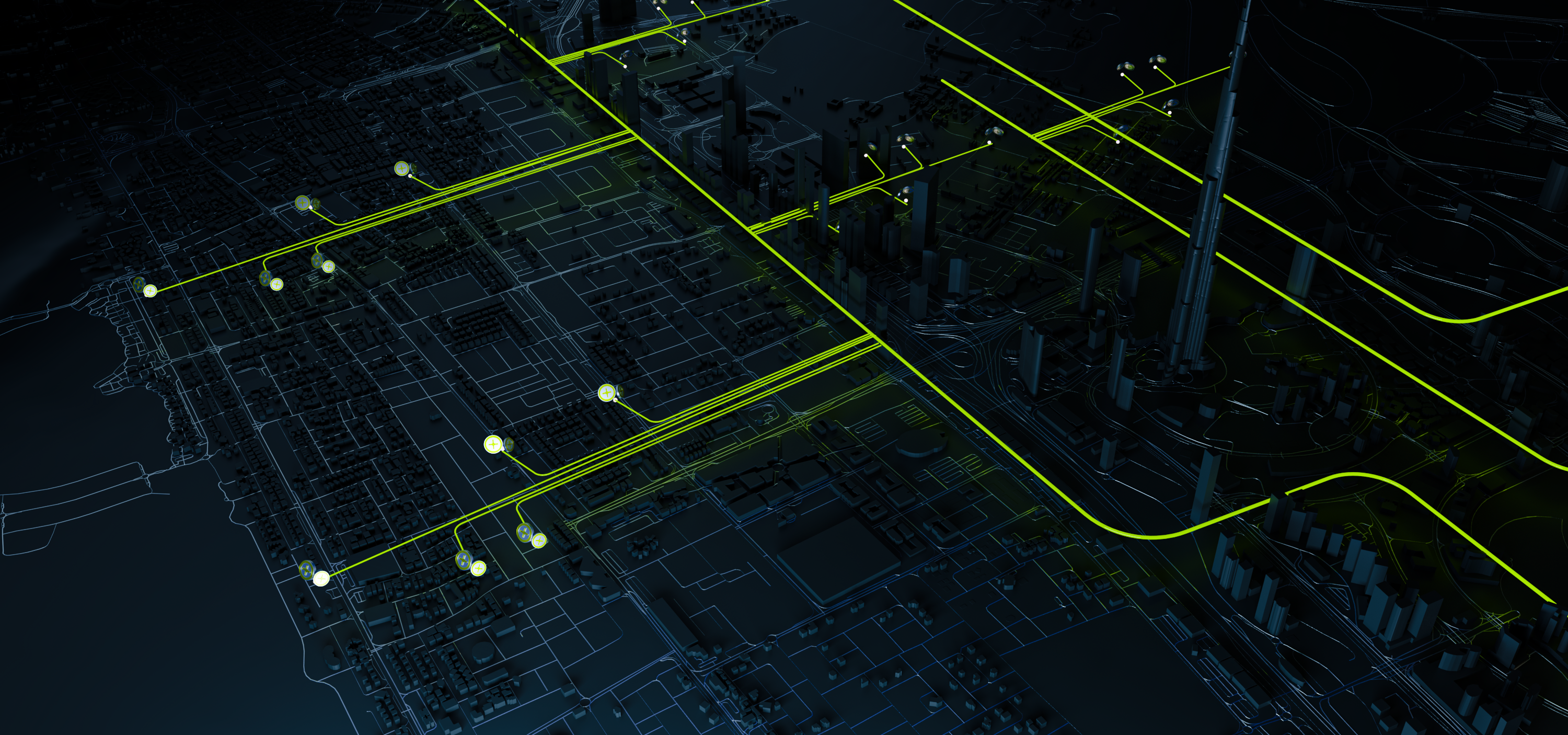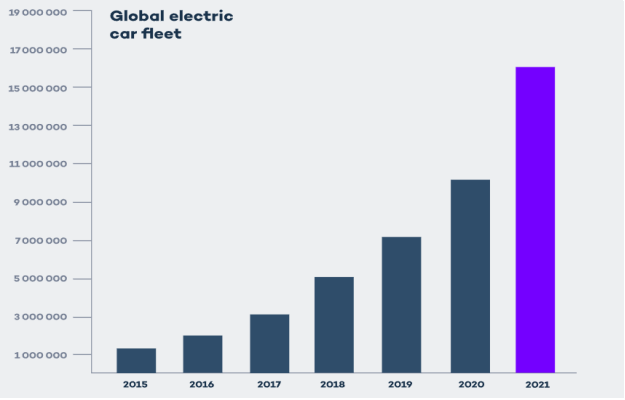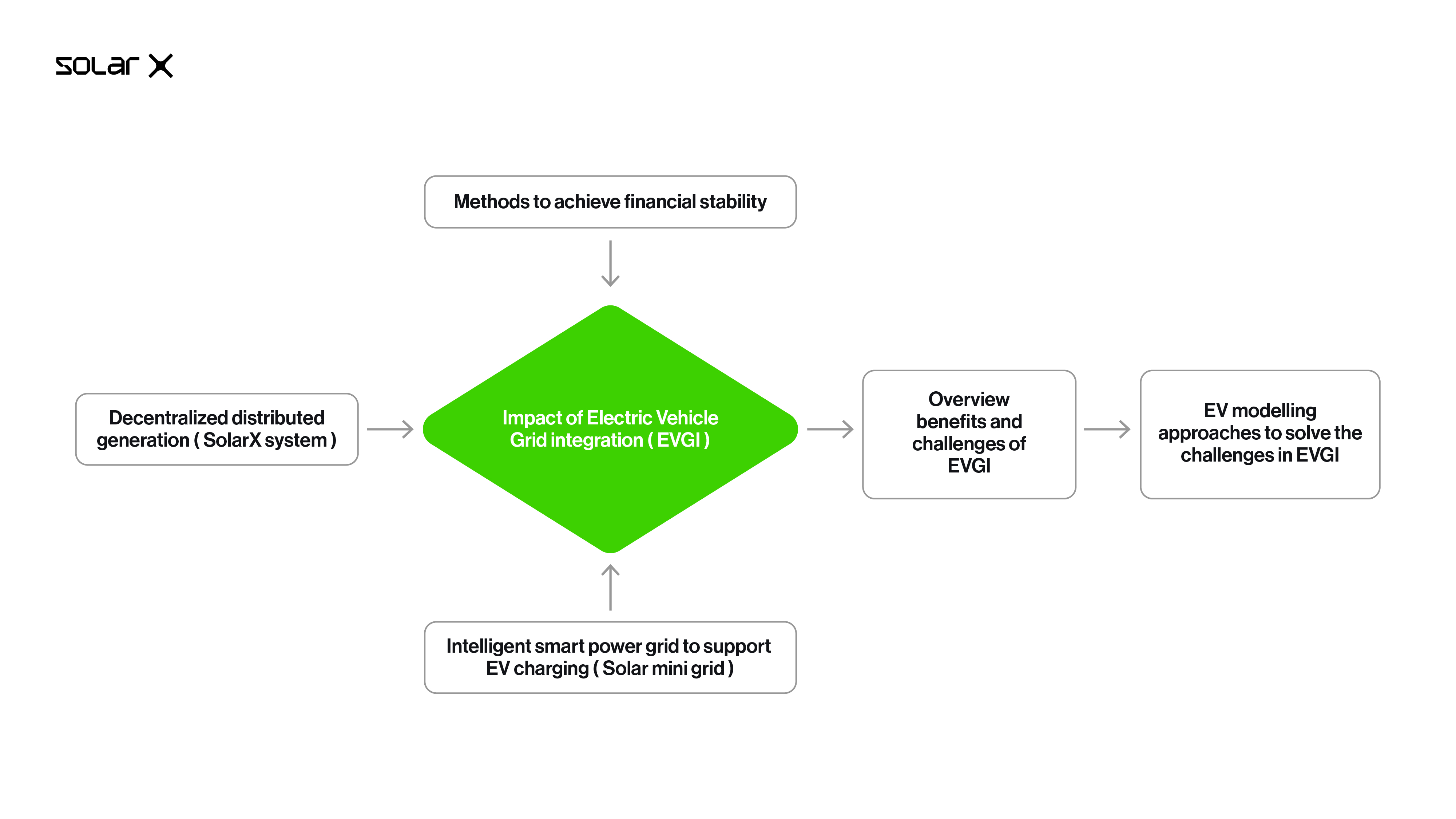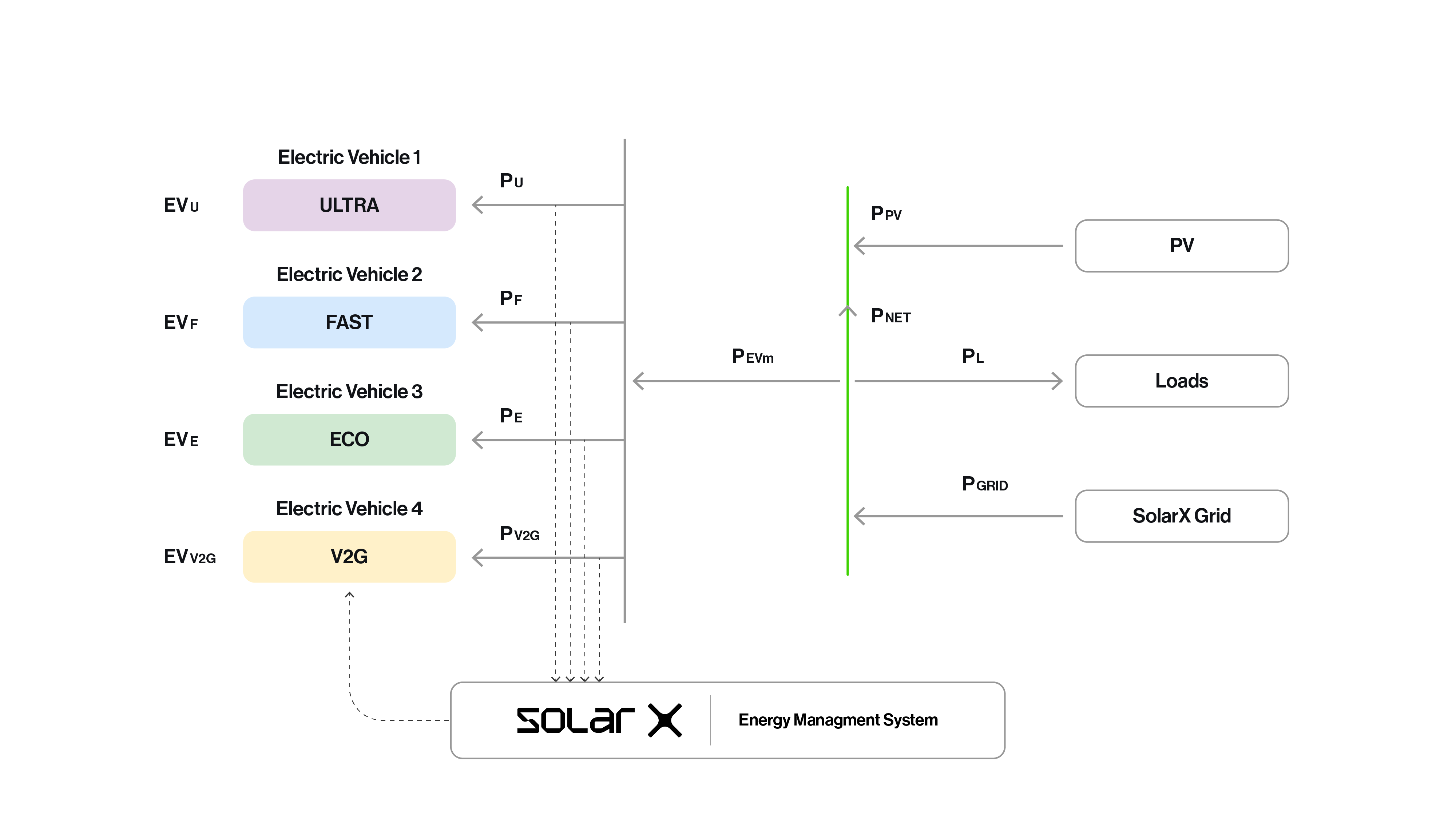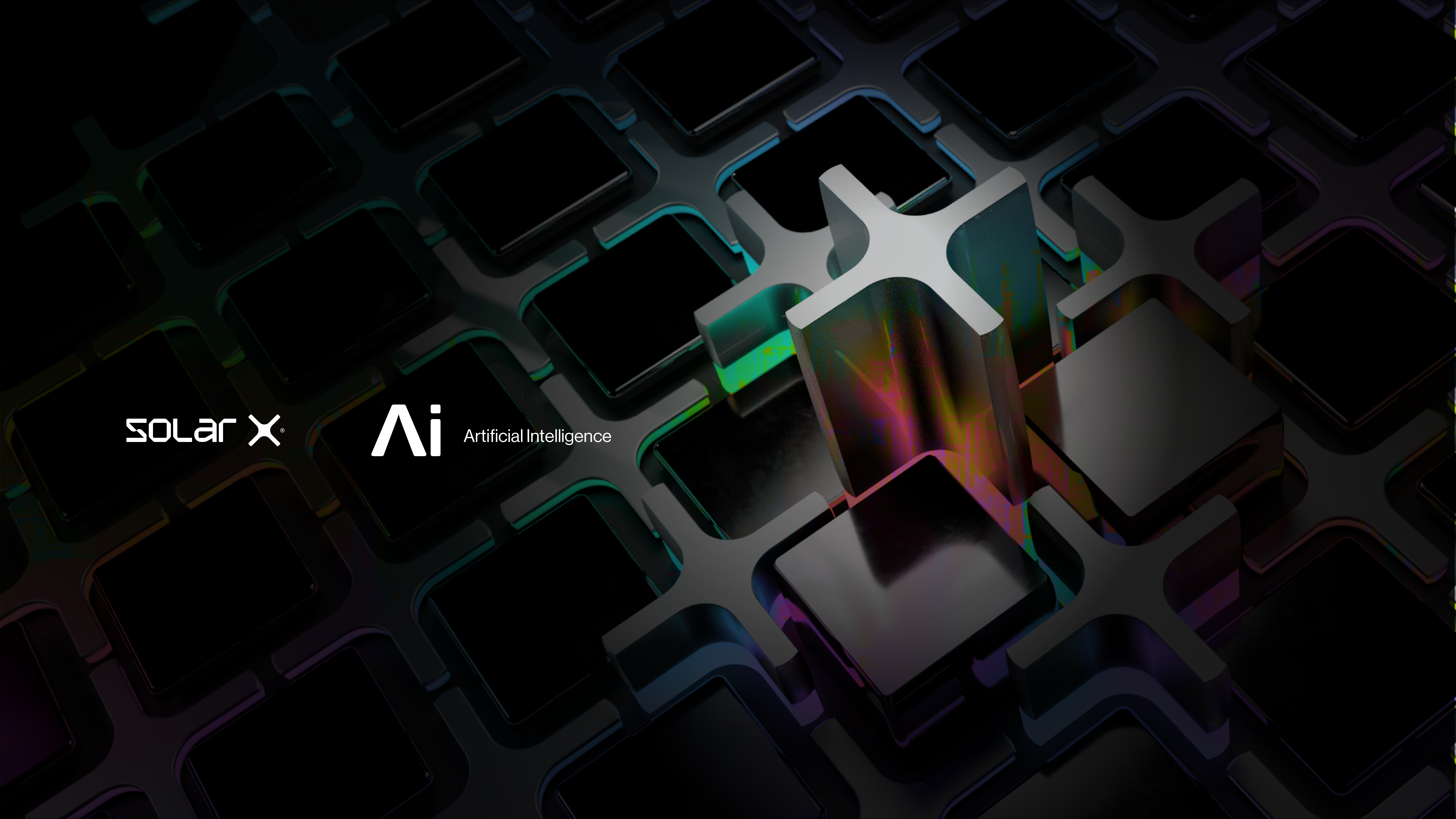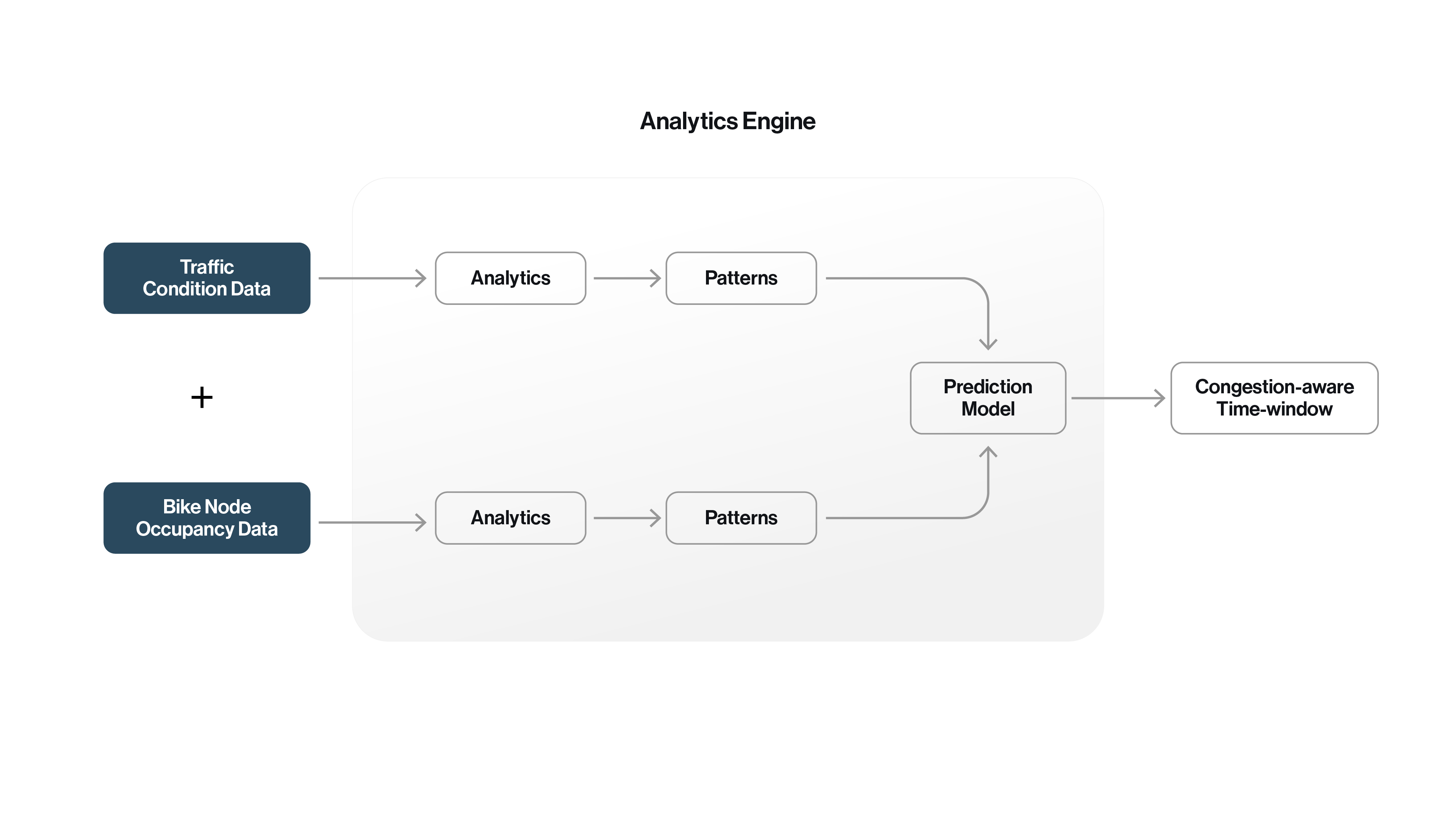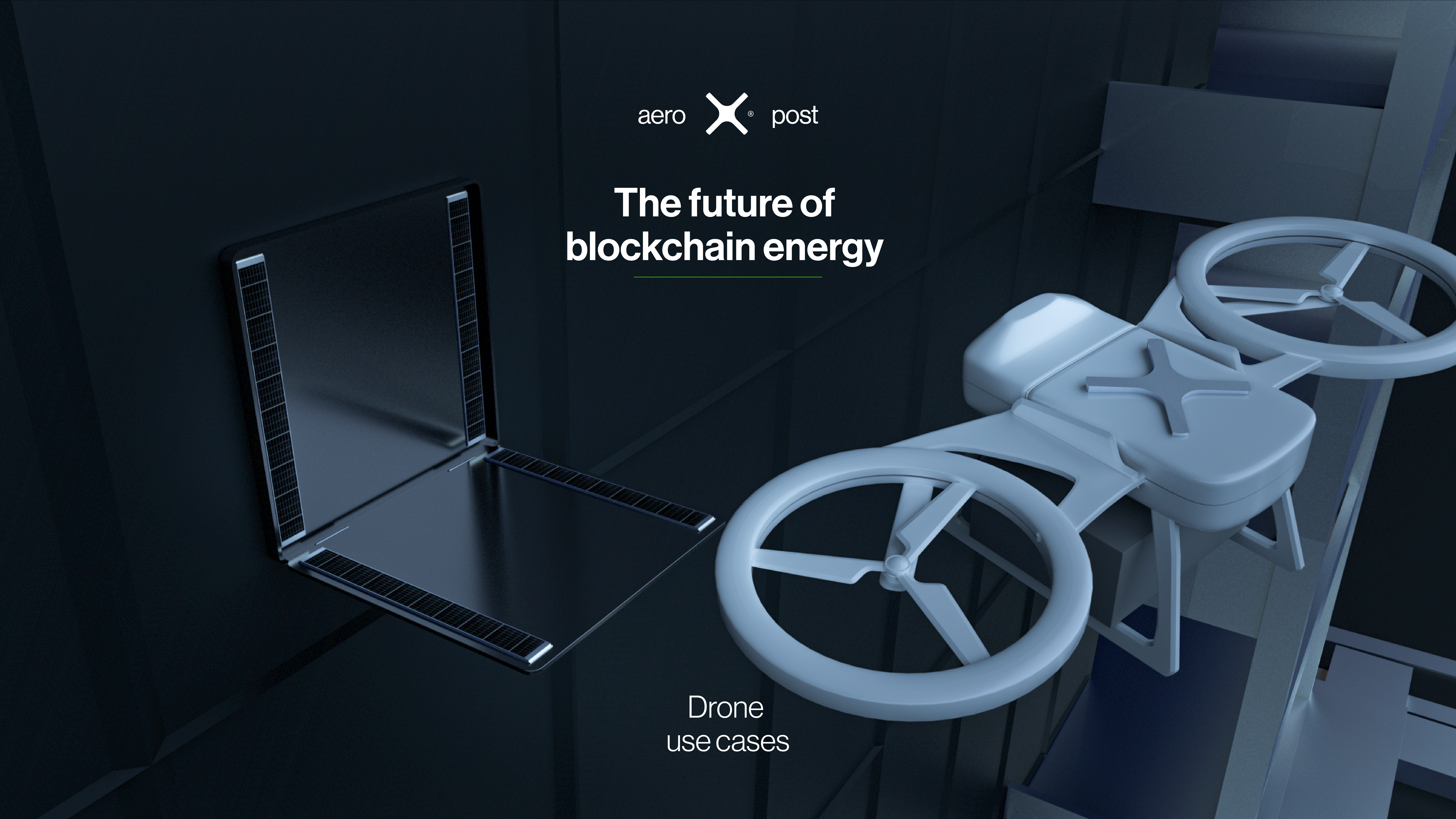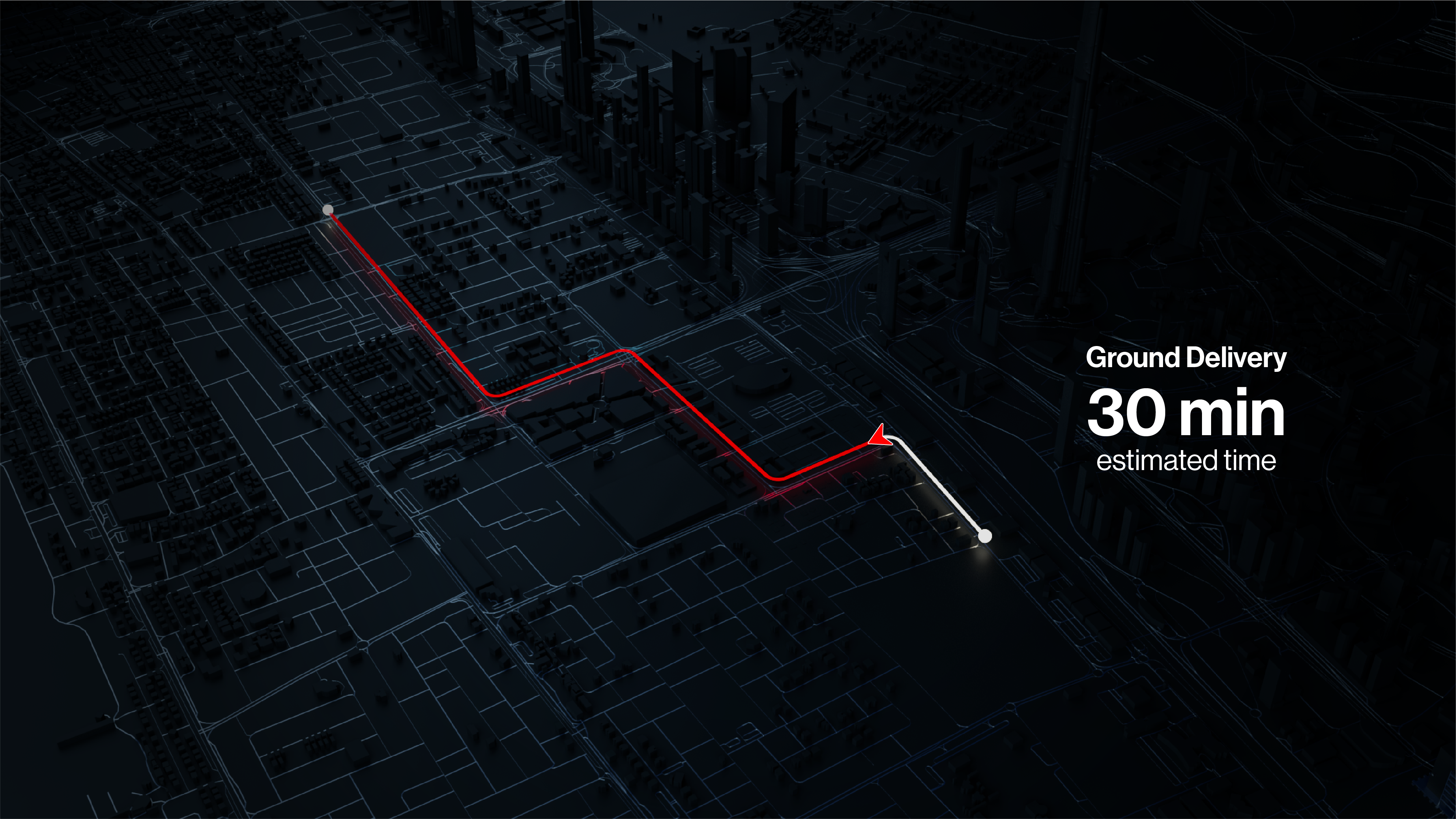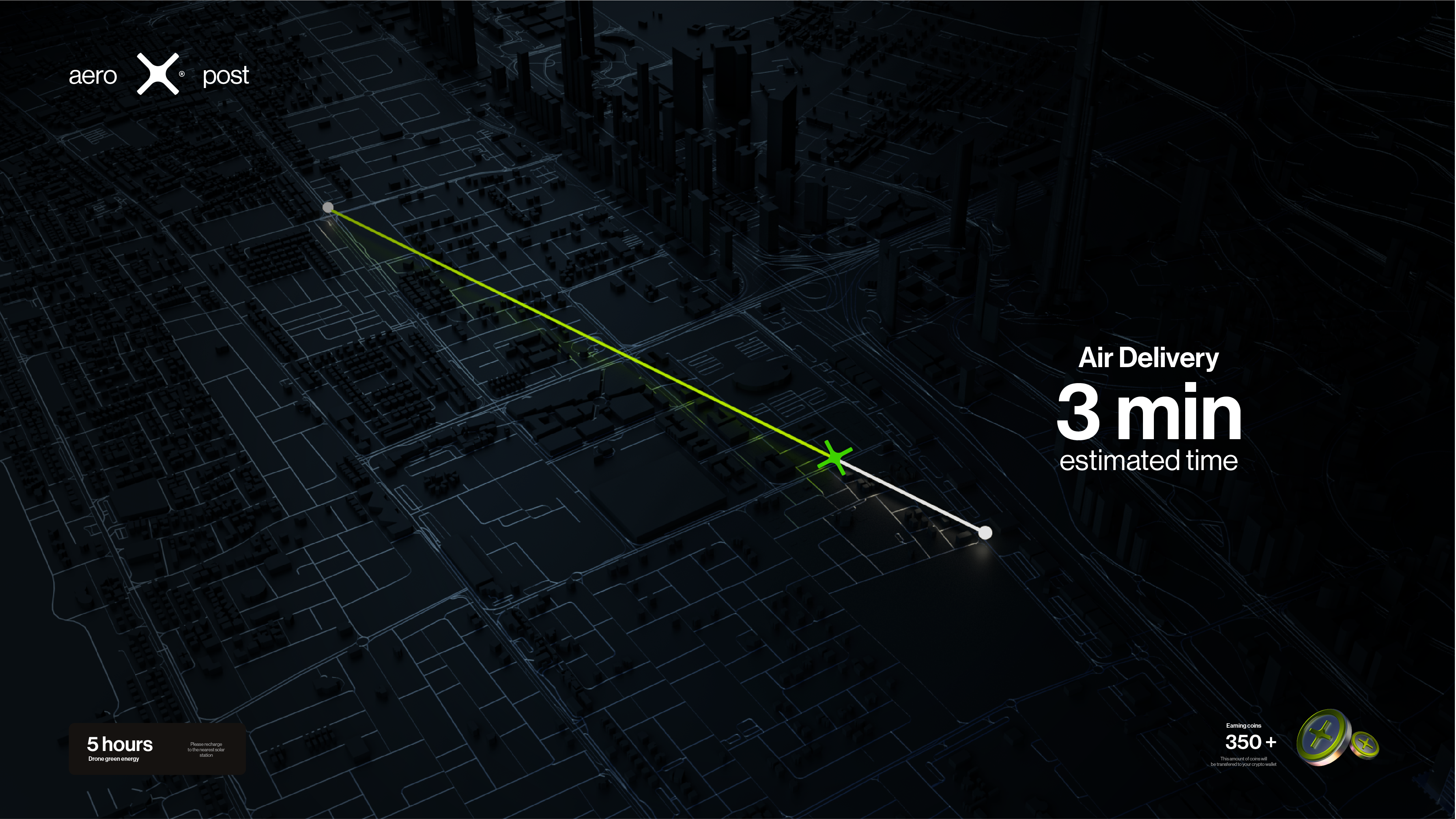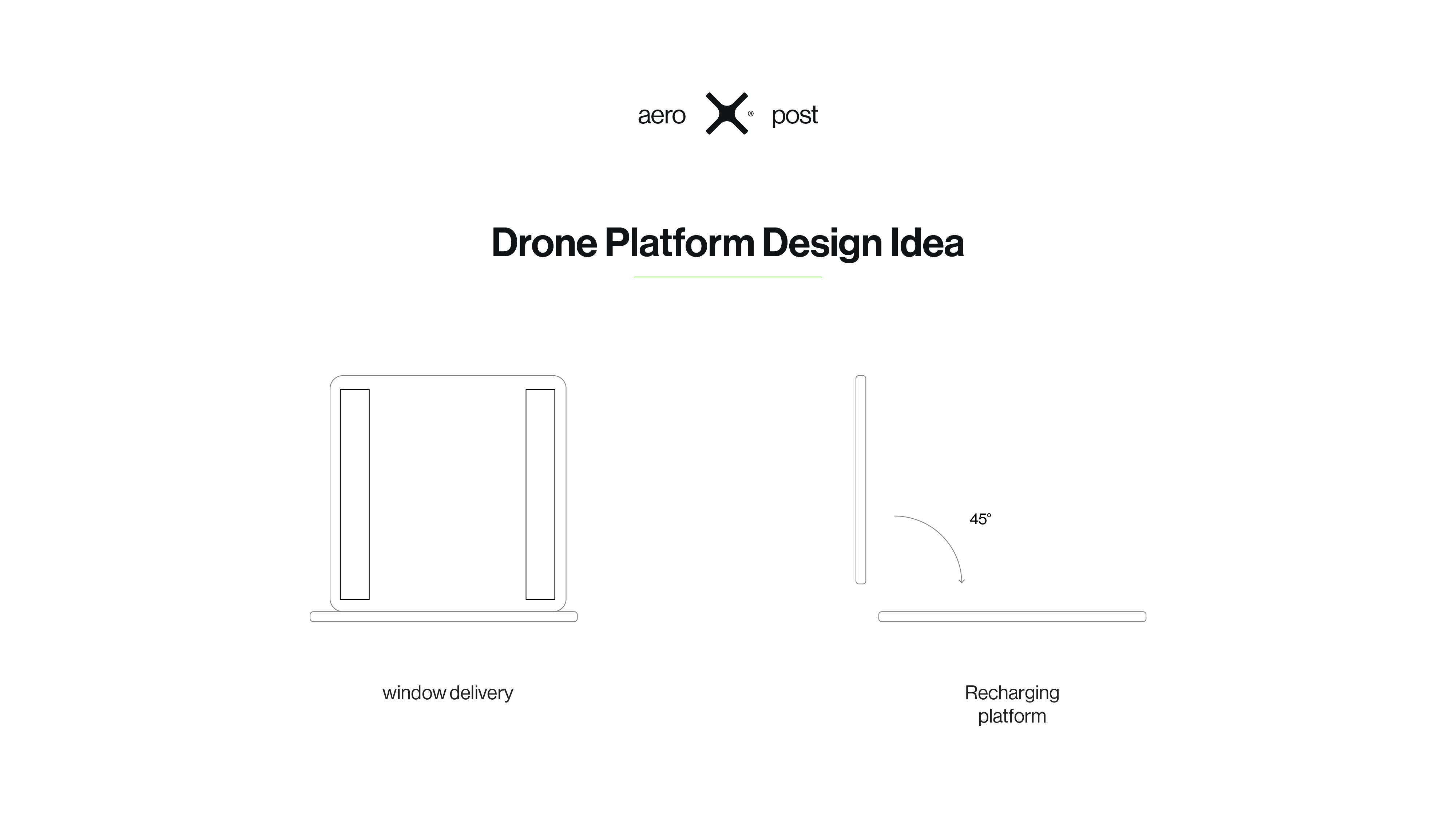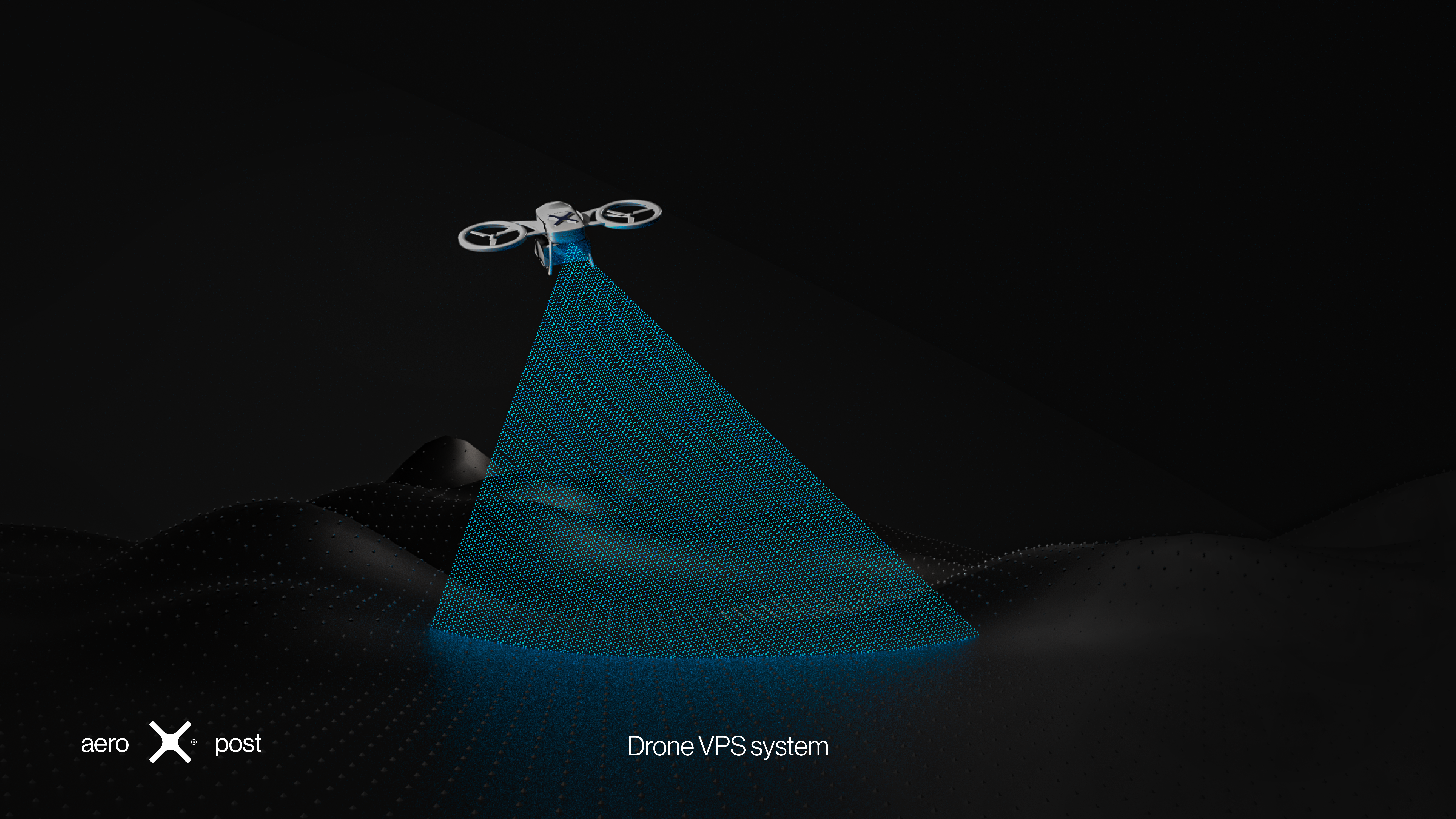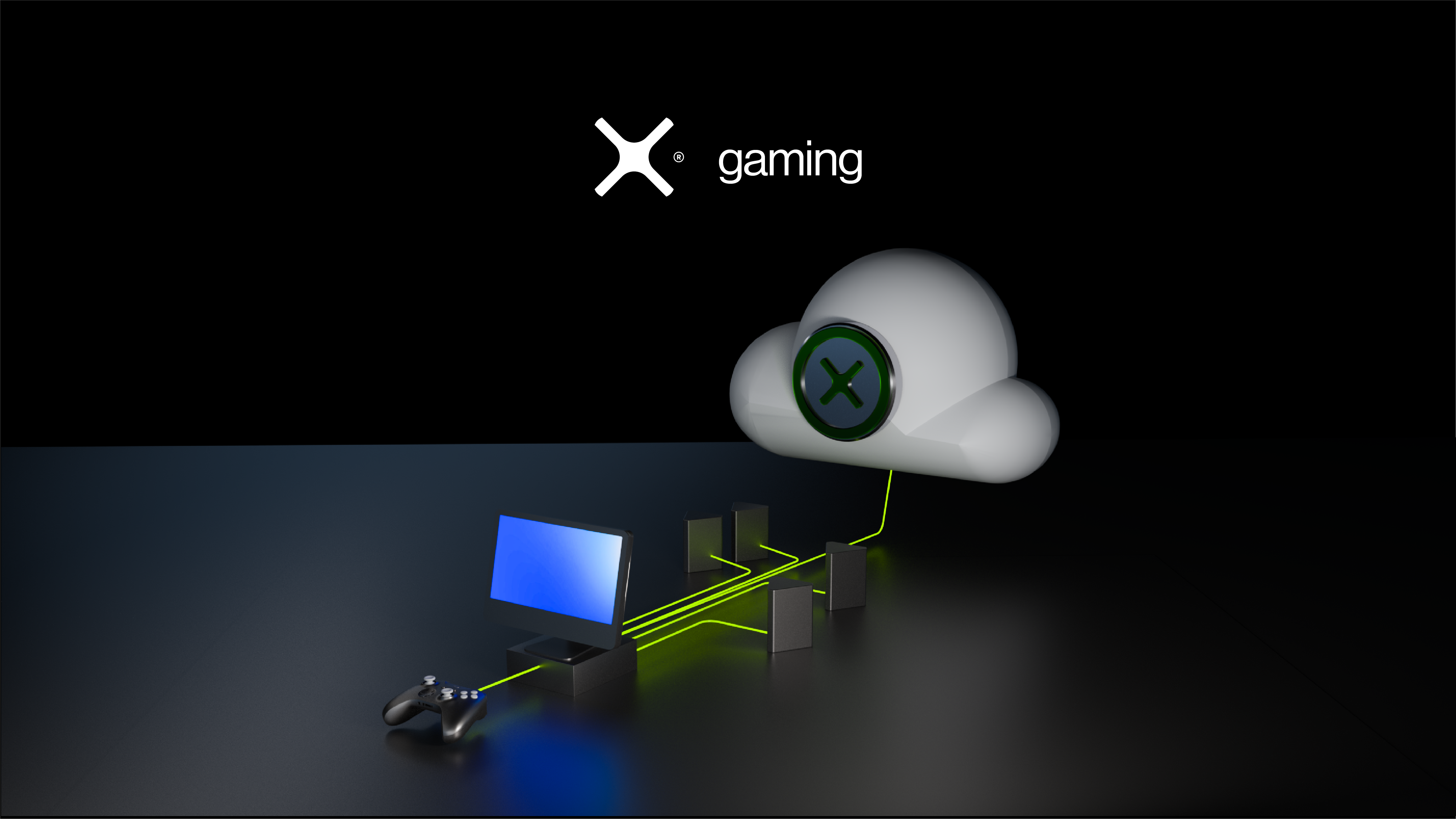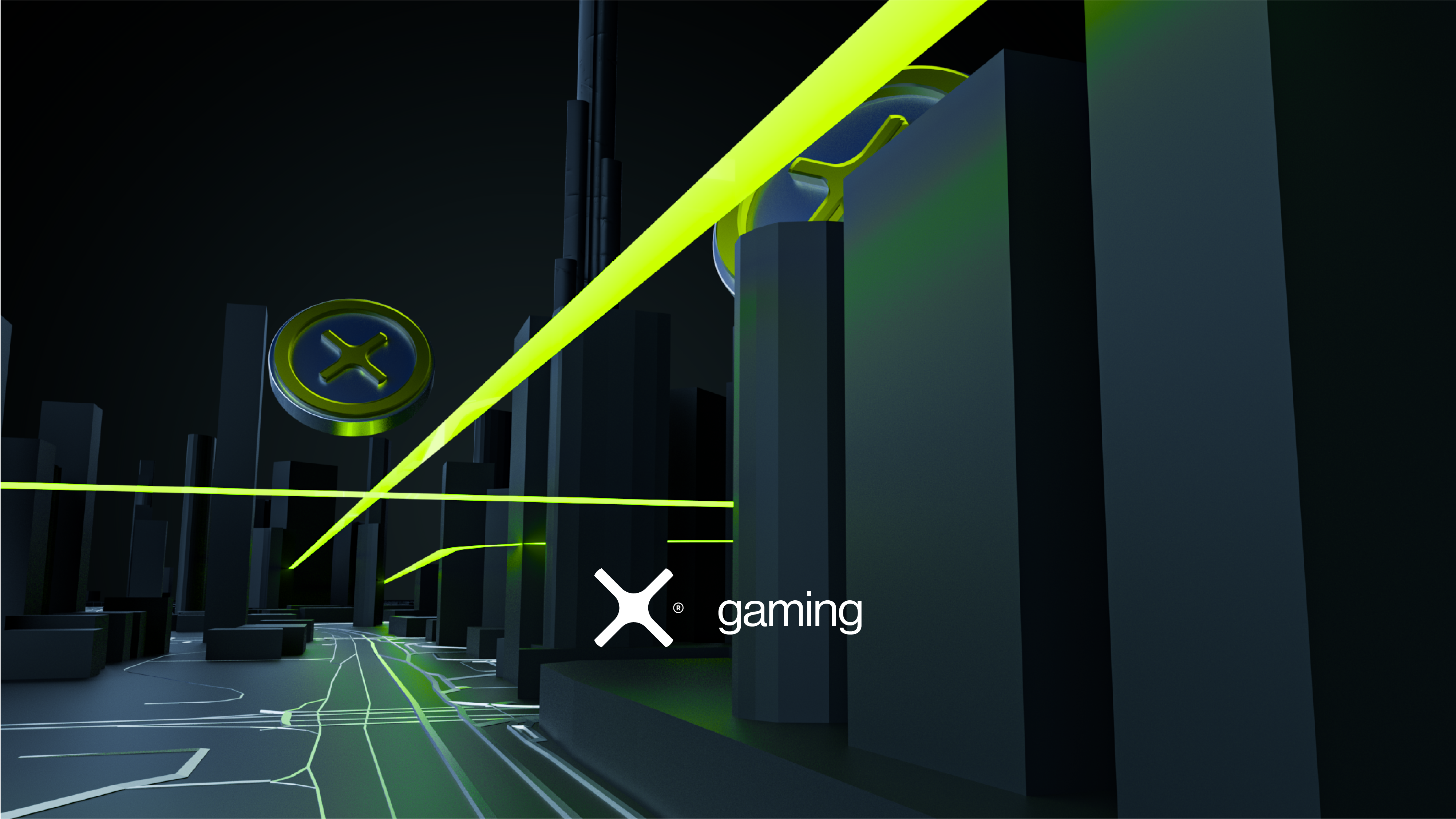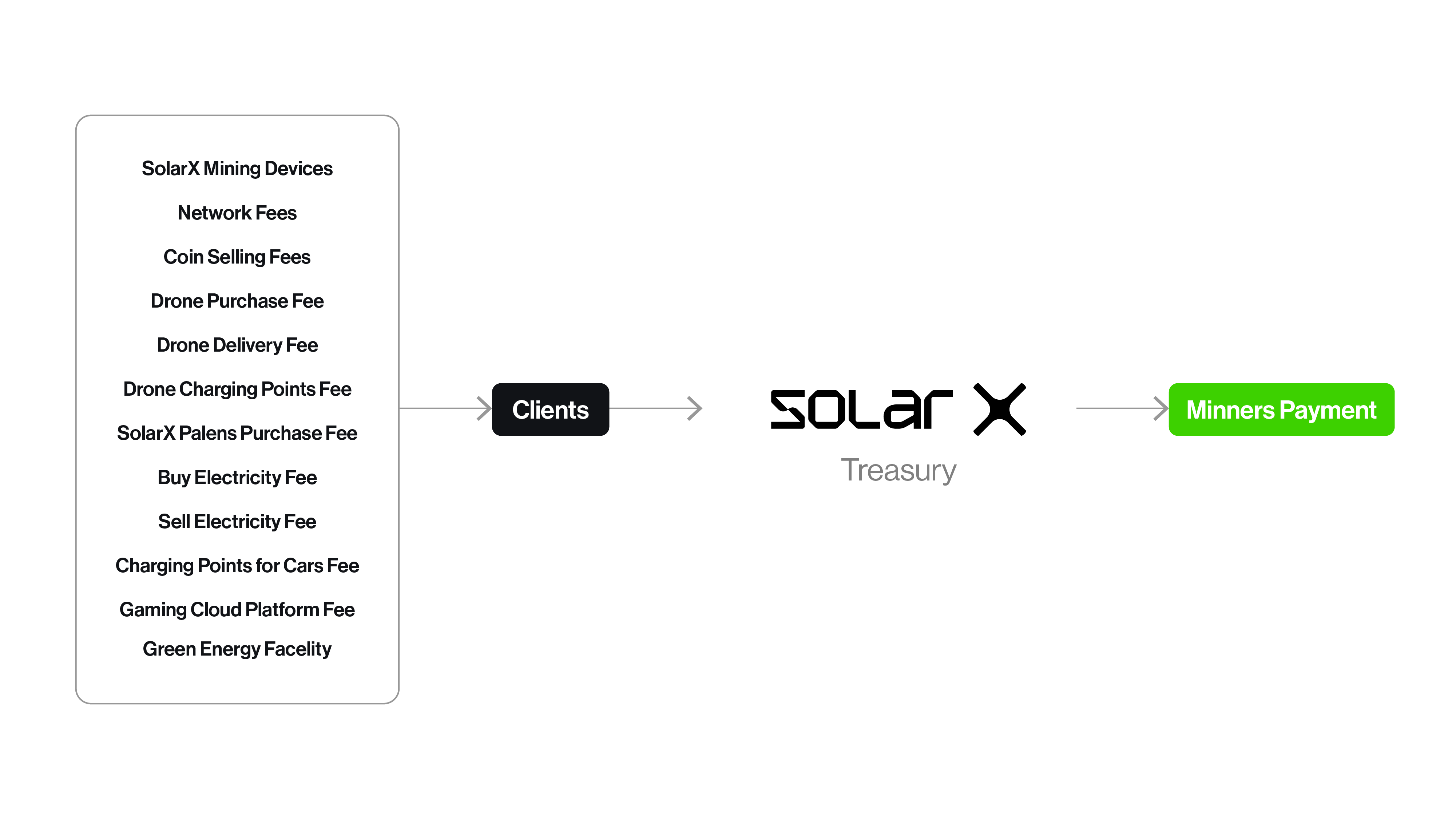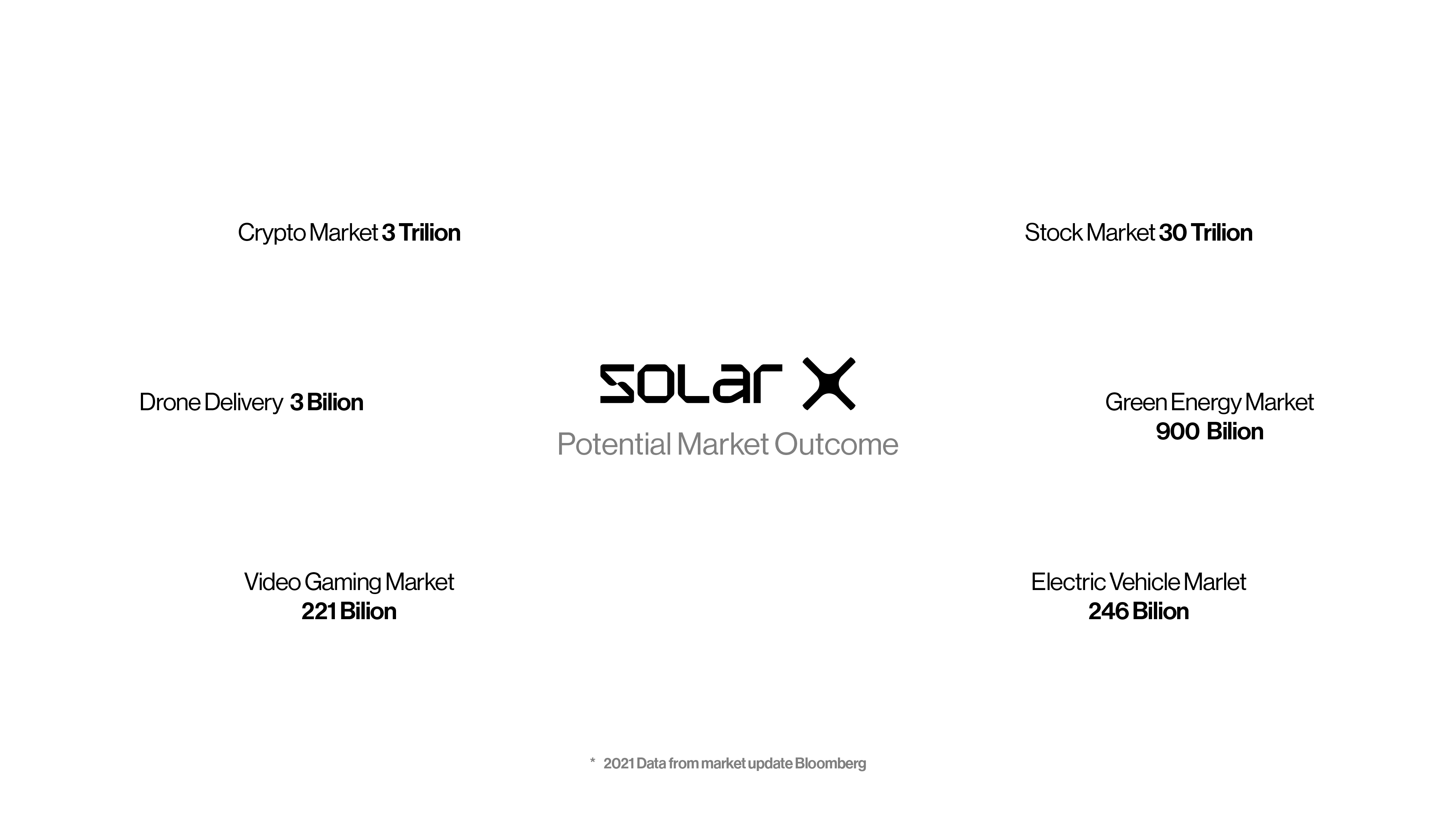Solar X Mining Device
SolarX device is developed to use solar panels or other renewable energy sources to power the
mining process, reducing the device's environmental impact and potentially lowering
operating costs.
The mining device works by solving complex mathematical equations to verify transactions on
a network and earn SolarX coins as a reward. This mining device is built on SolarX greenX
chain and is compatible with the blockchain's consensus mechanism and follows its own
network's rules for validating transactions between SolarX devices.
The use of renewable energy sources for cryptocurrency mining can help to create a more
sustainable and eco-friendly industry and could potentially offer cost savings and other
benefits for mining companies.
Reduced energy consumption: By using solar power instead of traditional power sources, the
device could significantly reduce energy consumption and associated costs.
Environmentally friendly: Solar power is a clean and renewable energy source, which will
help to reduce the carbon footprint of the mining process.
Increased efficiency: The use of solar power could increase the efficiency of the mining
process, allowing for faster and more cost-effective coin generation.
Watt
Watt is a unit of power, which is a measure of energy per unit of time in SolarX mining. In
the context of SolarX cryptocurrency mining, Watt will be used to measure the power
consumption of mining hardware.
SolarX project will use Watt as a unit of measure for the power consumption of its mining
hardware. Watt is a commonly used unit of power, which represents the rate at which energy
is consumed or produced per unit of time. In the context of SolarX cryptocurrency mining,
the power consumption of mining hardware is a crucial factor in determining its efficiency
and profitability. By measuring the power consumption of mining hardware in Watts, the
SolarX project can determine the energy efficiency of its mining operations and optimize its
hardware accordingly.
Additionally, the use of solar power in the SolarX project's mining operations means that
Watt can also be used to measure the energy production of its solar panels. By measuring the
energy production of its solar panels in Watts, the SolarX project can optimize its solar
panel arrays and maximize the amount of solar energy used in its mining operations.
Overall, the use of Watt as a unit of measure for the power consumption and energy production
of mining hardware and solar panels in the SolarX project can provide a more standardized
and transparent way of measuring the efficiency and sustainability of its mining operations.
Solar
SolarX mining device is a Solar-powered mining device that mines SolarX coins during the day
and stores excess solar energy in a battery for use at night to mine. The mining device will
be connected to a solar panel, an inverter, and a battery bank to function.
During the day, the solar panels will collect energy from the sun and convert it into DC
electricity. The inverter will then convert this DC electricity into AC electricity that
will be used to power the mining device. Any excess energy that is not immediately used by
the mining device will be stored in the battery bank for use at night.
At night, or during periods of low solar generation, the mining device will draw power from
the battery bank to continue mining.
SolarX Miner Energy Kit
Here are the specifications and key advantages of the Solar Panel and SolarX Miner Battery
Solar panel:
Technical Specifications:
Voltage at Open Circuit (Voc): 23.4V
Voltage at Maximum Power Point (Vmp): 18V
Current at Maximum Power Point (Imp): 1.11A
Short-Circuit Current (Isc): 1.16A
Key Advantages:
Advanced Energy Harvesting: With a Vmp of 18V, the solar panel excels in capturing sunlight, ensuring optimal energy conversion even in less-than-ideal conditions.
Reliability Unleashed: Boasting a short-circuit current (Isc) of 1.16A, this solar panel guarantees consistent and secure performance, adapting to diverse environmental challenges.
Compact Efficiency: The 350x350mm dimensions is an ideal choice for seamlessly integrating solar power into mining.
Battery:
Technical Specifications:
Model: Enersys NP5-12
Type: Sealed Lead Acid (SLA), Valve-Regulated Lead-Acid (VRLA)
Voltage: 12 Volts
Capacity: 5 Ampere-hours (Ah)
Maximum Cycle Life: 1200 cycles at 50% depth of discharge (DoD)
Key Features:
High Reliability: The Enersys NP5-12 is built for reliability, providing a steady and consistent power supply.
Maintenance-Free Design: With a sealed construction and VRLA technology, this battery requires no maintenance, allowing for convenient and worry-free operation.
Long Cycle Life: Designed for durability, this battery boasts a maximum cycle life of 1200 cycles at a 50% depth of discharge, ensuring a cost-effective and long-lasting energy solution.
Compact Form Factor: The NP5-12's compact size makes it easy to install in various spaces, providing flexibility in designing your energy storage system.
First Time Setup
Device Setup Instructions
Upon your initial purchase, it's essential to commence operations in the morning to ensure your miner receives the
vital sunlight needed to power up and begin its mining process. To begin using the Miner, log into your solarx.ai.
account. Once logged in, navigate to the 'Home Page' and locate the section labeled 'My Assets' where you will find
your unique 'Secret Key.' Copy this key as it is crucial for the setup process. Remember to store your secret key
securely, either by committing it to memory or storing it offline to prevent unauthorized access. Avoid phishing
attempts by not sharing your secret key and reporting any suspected compromises promptly to our support team.
To initiate setup, start by turning on the device using the button at the top of the Miner. Upon startup, the SolarX
logo will display on the screen. Once you see the logo, on your Android or iOS phone, navigate to the settings menu
and locate the Wi-Fi options. Connect to the "SolarX" network without a password. If you encounter difficulties, use
the "Reset Button" on the top right side of the Miner.
Once connected to the SolarX device's Wi-Fi, your phone will display the Wi-Fi manager screen. Tap on "Configure WiFi"
and select your preferred Wi-Fi network by entering its SSID and password. Input your designated secret key in the
appropriate field and save the settings. Allow the device a minute to establish the connection. Once the connection
is established, exit the configuration screen. You can now monitor your mining balance by logging into your account
at solarx.ai. If you encounter any issues with the configuration, utilize the "Reset Button" or contact
our Web Support at our Platform solarx.ai. for assistance with Miner setup.
Device Resetting
If you need to reset your configured device, locate the reset button on the back of the device plate,
positioned on the top right side. Press and hold this button for approximately 10 seconds.
This action will perform a factory reset, clearing the Wi-Fi connection, secret key, and any previous
user data. After the reset is complete, you'll need to go through the device setup process again, following
the steps outlined in "Device Configuration".
Device Arrival
Upon your initial purchase, it's essential to commence operations in the morning to ensure that your miner receives
the vital sunlight needed to power up and begin its mining process. Upon receiving the device, the battery will be
fully charged, allowing for immediate setup. Turn on the device and proceed to configure the Wi-Fi settings with the
provided secret key, following the steps outlined in "Device Configuration." You can connect the Solar Panel to the
device right away, ensuring it's directed towards the sky with no obstructions, aiming for a 360-degree view of
the sky. In sufficient daylight, the Solar Panel will begin harvesting energy and send it to the solar
charge controller, initiating the battery charging process. You can monitor the balance of the mining at solarx.ai.
Optimal Placement for SolarX Miner and Solar Panels
Where to Put Your Solar Panel?
To maximize the efficiency of your solar-powered mining setup, the correct placement of your solar panel is crucial. Here's a quick guide:
Find Your Solar Sweet Spot: Identify an area with the most direct sunlight exposure, avoiding obstructions such as tall buildings or trees that may cast shadows on your panel.
Maximize Southward Orientation: Whenever possible, position your solar panel towards the geographic south to ensure consistent exposure throughout the day.
Tilt for Efficiency: Depending on your latitude, consider tilting the panel slightly towards the sun's path to optimize energy absorption. Consulting a solar professional for precise adjustments may be beneficial.
Stay Clear of Debris: Regularly clean your panel to remove dust, dirt, or any obstructions, ensuring a clean surface for optimal energy conversion.
While solar panels are designed to withstand various conditions, it's prudent to exercise caution. Avoid letting heavy snowfall or rain accumulate on the panel, as it may temporarily hinder its function. Regular inspections and gentle
removal of snow or debris can help maintain optimal performance. Ensuring that your solar panel directly faces the sun guarantees efficient energy accumulation, seamlessly powering your miner. In the event of a solar connection loss,
a safety feature will automatically power off the miner until the panel is repositioned for maximum sun exposure.
Remember, a well-oriented solar panel guarantees uninterrupted mining operations.
Caution: If the solar panel is experiencing issues with sunlight or any other problems, and the battery health indicates it is low, it is necessary to take action. Disconnect the solar panel cable and instead, insert the DC
Adapter jack cable into the solar panel port. Ensure that the DC Adapter is securely connected until the solar panel is operational again and capable of producing sufficient power. This switch will temporarily allow the
miner to operate using the DC Adapter until the solar panel's functionality is restored.
Caution: It is crucial to monitor the battery health of the miner. If the battery health is depleted, you must recharge the battery before turning off the miner. However, it's important to note that leaving the miner turned
off for extended periods, especially when the battery health is very low, can be detrimental to the battery. This practice may lead to further degradation of the battery's health. Therefore, it is advised to ensure the battery is
adequately charged or powered regularly to maintain its health and longevity.
Where to Put the Miner?
It's essential to shield your miner from extreme cold and excessive heat to ensure stable performance and prolong the lifespan of your equipment. Choose a location with a moderate climate to keep your mining operations running smoothly.
Avoiding extremes in temperature is crucial for maintaining optimal functionality and efficiency.
FAQ
Should we leave the Miner together with Solar Panel outside?
While the SolarX Miner is designed to harness solar power, it's important to note that the miner itself should be kept indoors in an environment with a moderate
and stable temperature. Extreme temperatures, whether too high or too low, can have adverse effects on the miner's performance. The solar panel, on the other hand, should ideally be placed outside in direct sunlight for optimal
energy absorption. Providing a shelter or protective covering for both the miner and the solar panel can help safeguard them from harsh weather conditions. This ensures the longevity and efficiency of your mining setup.
Is it necessary for me to remain logged into the platform for mining to occur?
No, you do not need to remain actively engaged on the platform for mining to take place. Once the SolarX Miner is turned on and properly aligned with the sun, it will continue to mine autonomously. You can periodically check your
mining balance by logging into your account on our official platform at solarx.ai. However, rest assured that the mining process will continue uninterrupted regardless of whether you actively monitor it or not. The SolarX Miner
is designed for seamless and continuous operation.
Do we need to buy something for the Miner to operate better?
No, you won't need to make any additional purchases for the miner to operate optimally. Upon purchasing the SolarX Miner, you will receive both the miner itself and a dedicated solar panel, along with a comprehensive manual guide.
These components are carefully selected to ensure seamless and efficient mining operations. Rest assured, you won't require any supplementary equipment; your miner is ready to mine with the provided setup.
Where to turn on the miner?
The SolarX Miner features a prominent power button located on the top of the device. Simply press this button to initiate the mining process. For detailed setup instructions, please refer to the 'First Time Setup' section provided below.
Is it necessary for the miner to be in close proximity to the Wi-Fi network?
Yes, it is recommended to position the miner as close to your Wi-Fi network as possible. The closer it is, the better the connectivity. Placing the miner too far from the Wi-Fi source may result in connectivity issues and potential errors. Ensuring a close and stable Wi-Fi connection will optimize the performance of your SolarX Miner.
Mining Rewards Calculation
Just like other mining rigs and antminers, our device operates within a network where the level of difficulty is influenced by the total wattage present. In our unique mechanism, known as PoGE (Power of Green Energy), the higher the wattage on our network, the greater the challenge. Essentially, our device functions based on an equation that incorporates all the 'wattage' currently present on the network, in addition to your individual 'wattage' contribution.
In the PoGE mechanism, we calculate the total active 'wattage' generated by all the current SolarX Miners and distribute them among the miners based on the amount of watts they utilize. This ensures fair distribution and efficient utilization of green energy within our network.
Use cases for the token, its utility and how do users and the ecosystem earn
Introduction to SolarX Mining Ecosystem:
The SolarX mining ecosystem offers an innovative approach to both mining rewards and energy consumption, driven by sustainable practices and technological advancements. Beyond merely generating rewards, our mining devices provide a means to offset electricity costs through harnessing solar energy.The operational dynamics of this ecosystem are transparent and easily comprehensible, ensuring user engagement and empowerment.
Future Roadmap and Utility Expansion:
Our roadmap outlines a trajectory where mining devices not only facilitate blockchain operations but also serve as versatile energy hubs. We envision a future where surplus energy generated by these devices powers personal electronics such as laptops, smartphones, cameras, and drones. Furthermore, we aim to establish charging stations catering to delivery drones and electric vehicles (EVs), offering users additional revenue streams and enhancing the overall utility of the ecosystem.
Explaining the technical prospect on how the mining reward works
Mining rewards are intricately tied to the functionality of our mining devices within the Xchain ecosystem. Powered by solar panels, these devices not only sustain their operations but also store excess energy in onboard batteries, ensuring uninterrupted performance during periods of low sunlight.
The calculation and distribution of rewards are managed autonomously within the Xchain, leveraging proxy contracts to interact with other blockchain networks. This sophisticated approach, dubbed Proof of Green Energy (PoGE), eliminates the need for conventional proof-of-consumption mechanisms.
Explaining the chain we are building, coins, contracts and specifics
The foundation of our ecosystem lies in the Xchain blockchain, underpinned by the innovative PoGE consensus mechanism. Xchain operates as a decentralized network, seamlessly integrating with various blockchain protocols, including PoW, PoS, PoC, and PoA, through smart contract proxies.
This interoperability fosters a conducive environment for token creation and cross-platform mining activities, promoting diversity and flexibility within the ecosystem.
SOLX
SolarX is an ERC-20 governance and utility coin that is used in SolarX mining devices.
SolarX is the native
coin of SolarX “SOLX” will be required to buy the mining device. SolarX will be used in
real-life use cases
and in the ecosystem of SolarX.
“SOLX” is a utility and governance token that is specific to the SolarX ecosystem.
“SOLX” is required to purchase the SolarX mining device, which suggests that it will have a
role in securing the network and/or providing rewards for miners. “SOLX” will be used in
real-life use cases such as purchasing items and paying for electricity charges for SolarX
grid mini-Grids and recharging cars. This suggests that “SOLX” will have utility as a means
of exchange or store of value within the SolarX ecosystem.
“SOLX” will be used to buy electricity and sell electricity, which suggests that the SolarX
ecosystem will be involved in the energy marketplace or grid.
Paying for the SolarX commercial decentralization NODEs with “SOLX”
It will be used on gaming platforms to purchase items and pay for cloud services. This
suggests that Solx may have some role in incentivizing gameplay or creating a more immersive
gaming experience.
Overall, $SOLX will have a variety of use cases within the SolarX ecosystem, ranging from
securing the network to facilitating real-world transactions to enhancing mining and grids.
It will be interesting to see how this token develops and how it is ultimately used within
the SolarX ecosystem.
SolarX Coin (SolarX) total supply is 700,000,000 coins. But that's just the beginning of our journey. Get ready to experience the future of blockchain technology with XChain, our innovative blockchain platform. XChain offers lightning-fast transaction speeds, making it ideal for everyday transactions and high-volume use cases. Say goodbye to long confirmation times and hello to instant transactions. But XChain is more than just a fast blockchain. It's a platform for innovation and creativity. Developers can leverage XChain to create their own tokens and digital assets, opening up a world of possibilities for decentralized applications and financial instruments. Whether you're building the next big thing in decentralized finance or exploring new ways to tokenize real-world assets, XChain provides the tools and infrastructure you need to succeed. Join us as we revolutionize the world of blockchain technology with SolarX Coin and XChain. The future is decentralized, and it starts here.
SolarX Coin Allocation
The total supply of SolarX is permanently fixed at 700 million coins, so the total supply
will never increase above the 700 million mark. Similarly, the contract interface does not
expose any token-burning capability, so the total supply will never decrease.
SolarX is fixed at 700 million coins and there is no token-burning capability, which means
that the total supply will never decrease. This fixed supply can help to create scarcity and
potentially support the price of the coin over time, as demand for SolarX increases.
Having a fixed supply also ensures that the SolarX ecosystem remains stable and sustainable in
the long run. It also means that the SolarX team will carefully manage the distribution of coins
to ensure that there is enough liquidity to support the various use cases of the coin, such as
buying and selling goods and services within the ecosystem.
| 40% |
MINING |
280.000.000 |
| 8% |
TEAM |
56.000.000 |
| 5% |
MARKETING |
35.000.000 |
| 15% |
STAKE |
105.000.000 |
| 3% |
ADVISORS |
21.000.000 |
| 29% |
ECOSYSTEM |
203.000.000 |
Different Entities
Who /What are the different entities and names and how do they
relate to each other?
SolarX group is a Web 3 company located in Dubai, best known for the crypto world and the new
concept of mining.
SolarX coin will be the newest project of the company, and it's intended to build a better
mining concept in crypto.
SolarX is the steward of “SOLX”, a legal entity that exists to administer the decisions of
the SOLX DAO.
SOLARX is a decentralized governance organization that will make decisions regarding
ecosystem fund allocations, governance rules, projects, partnerships, and more “SOLARXCOIN".
DAO membership is open to all “SOLARXCOIN” holders.
Foundation control and role
Does the foundation control the SOLX coin and/or the SOLARX DAO?
If not, what role do they
play?
The Foundation does not control the “SOLX” Coin or the “SOLX” DAO. The Foundation consists
of an administrative board, which exists solely to oversee the decisions of the “SOLX” DAO,
as well as a third-party project management team in charge of ensuring “SOLX” Coin DAO
decisions are implemented. A decentralized autonomous organization (DAO) is the best way to
give every member of the community a vote on important decisions, whether it’s a technical
upgrade or a decision to fund a new idea.
However, the reality is that today a DAO cannot sign a lease or hire people or make merch,
or do whatever
the community decides to do on its own.
The Foundation is responsible for the day-to-day administration, bookkeeping, project
management, and other tasks that ensure the “SOLX” Coin DAO community’s ideas have the
support
they need to become a reality.
Foundation Board
How was the foundation board selected?
Certain members of the community that have strong operational experience were consulted on
how to
best structure the “SOLX” Coin DAO. Several of these members voiced their willingness to
join the Board
to oversee the decisions of the community and are committed to upholding and
furthering the decentralization of the “SOLX” Coin DAO. The initial Board will serve 2 years
Other individuals
Will there be a chance for other individuals to join the board?
Yes, after the initial 2-year term, DAO members will vote annually to keep existing or
appoint new
Board members. “SOLX” Coin token holders (the DAO members) can also remove or replace a
Board
member at any time with a majority “In favor” vote.
Token Distribution Transparency Report: Community Holder Overview
After careful consideration, We have excluded addresses earmarked for specific purposes such as team allocations, liquidity provisions, and other reserved functionalities. The goal was to offer a comprehensive overview of the token distribution, focusing solely on the addresses that represent the broader community of holders.
In an effort to ensure transparency and accuracy, We meticulously examined all addresses associated with our token.
Excluded addresses: 0x6aF1f83EA40Ee4CBF18eF9316D4aBC5b59572063
Excluded addresses: 0x477c177ce8185c2BF0f922C3796435eC60bCd3a5
Excluded addresses: 0x3D3B5b8e084AeaDdb43B6Aa05a8eb35675DA084F
Excluded addresses: 0x91AA2674B42ad99c8b95f14edA9464a5971DF684
Excluded addresses: 0xd7bC61ac889068F01FEf5018C518d297298a5493
Excluded addresses: 0xe87bA7fE711552eB9458Fd052D3eA9B8a16CCD6F
Excluded addresses: 0x3A8a52Ce5254803BE5A81d38292602D606FD3784
Excluded addresses: 0xEf7b4A77D85f92D7086abfe38B154F0c18dF7F19
Excluded addresses: 0x659F3B84A520fFB7dEbd640e50DD25b3bb05C339
The refined calculation reveals that the total circulating supply in the hands of holders is now 2,524,950. This represents an elegant 0.36% of the total token supply.
Wind Farm
As large power plants are replaced by multiple photovoltaic panels on roofs, and wind
turbines on hills
and offshore, we now believe that synchronization in a decentralized power grid may actually
be easier
than previously thought, as a grid with many generators finds its own shared rhythm of
alternating
current.
Solar and wind energy will help stabilize the power grid and cryptocurrency mining.
Renewable energies such as wind and the sun are set to become increasingly important in
generating
electricity. If increasing numbers of wind turbines and photovoltaic systems feed electrical
energy into
the SolarX grid, it becomes denser and more distributed. Therefore, instead of a small
number of large
power plants, it links a larger number of small, decentralized power plants supporting
cryptocurrency
mining.
Solar Farm
Cloud mining has so far been expensive. You accumulate just coins, but with the SolarX cloud
mining facility, you mine coins and sell energy to the grid:
A SolarX electricity facility that powers the grid and does cloud mining, also known as a
solar power plant
or solar farm, will refer to a large-scale solar energy generation facility that feeds
electricity directly
into the power grid for widespread distribution to homes, businesses, communities and does
mining
producing coins for those who invested in SolarX facility.
SolarX power plants will typically consist of arrays of solar panels or photovoltaic (PV)
modules
that capture sunlight and convert it into electricity through the photovoltaic effect.
The electricity generated is then fed into the grid through inverters that convert it from
direct current
(DC) to alternating current (AC) for distribution to consumers.
Electricity Facilities
Solar electricity facilities powering the grid can have various sizes and capacities, ranging
from small-scale SolarX mini grids installations to utility-scale plants that generate large
amounts of electricity to
meet the energy needs of a significant number of users. These facilities have several
advantages:
The surplus electricity generated from the solar panels, which is not used for mining, can be
sold back
to the grid or to other consumers, creating a potential revenue stream. This can offset the
energy costs
associated with cryptocurrency mining and make the mining operation more sustainable and
environmentally friendly by utilizing renewable energy sources.
Renewable energy: Solar power is a clean, renewable source of energy that does not
produce harmful
emissions, greenhouse gases, or pollutants, making it environmentally friendly and
contributing to
mitigating climate change.
Grid stability and energy security: Solar power plants can contribute to grid
stability by providing a
consistent and reliable source of electricity during peak demand periods, reducing reliance
on fossil
fuel-based power sources, and enhancing energy security.
Increased energy independence: Solar panels can provide a decentralized and
independent source of
energy for cryptocurrency mining operations, reducing dependence on traditional energy
sources, and
increasing energy resilience.
Cost savings: Utilizing solar energy can offset the electricity costs associated with
cryptocurrency
mining, potentially increasing profitability for miners.
Sustainable energy generation: Solar power plants do not deplete natural resources and
do not
produce harmful waste or byproducts, making them a sustainable form of energy generation.
Positive marketing and branding: Utilizing renewable energy for cryptocurrency mining
can contribute
to a positive image and branding for the mining operation, appealing to environmentally
conscious
investors and customers.
In general, solar energy objects that supply the grid and produce coins play an important
role in the
transition to a more sustainable and renewable future of energy production and crypto mining
by
providing clean electricity to the grid for widespread use. They contribute to reducing
greenhouse gas
emissions, promoting energy security, promoting economic growth, and adapting currency
crypto
to your life in a healthier approach. A solar green energy facility can be an asset for both
mining
cryptocurrency and generating electricity for sale through the grid.
Pollution
Large amounts of carbon dioxide and other pollutants are polluting the atmosphere, leading to
unhealthy air and a dangerous atmosphere. Geopolitical relations have been heavily impacted,
with few
effective strategies developed to address this issue.
Energy companies also need to adhere to the rules of energy regulatory commissions and
implement
best practices to provide long-term benefits and improve the quality of life for consumers.
On the other
hand, consumers have also recognized the need for efficient energy methods, leading to a
high demand
for such devices.
To eliminate the need for a centralized energy station, SolarX can be used. SOLARX will build
decentralized local energy supply sources and can connect neighboring households through a
microgrid. Microgrids on the SOLARX platform can be developed to connect adjacent residences
to
form a local energy station.
A home with excess energy resources (such as a solar panel) can share the excess energy with
another home that requires energy for consumption. Smart meters executed by smart contracts
will
record the energy supplied and consumed by the respective parties on the SOLARX platform
(dashboard). This encourages peer-to-peer communication on the SOLARX platform, where
participants can decide on the amount they want to pay, to whom to sell their excess energy,
etc.
Optimize the cost of electricity
Implementing SolarX microgrids also helps optimize the cost and fair pricing of electricity.
Furthermore,
SolarX ensures that there is no unfair pricing and any fraud in the process since everything
will be
decentralized. This way, energy can be consumed and distributed more effectively and
efficiently
among others. This can provide a small but important step in indirectly reducing carbon.
One of the strengths of SolarX microgrids will also be the storage of electricity. The
innovation of
energy storage and sales to others by utilizing the SolarX platform will enter the
electricity industry,
which has great potential and has been used very little, almost not at all in crypto.
A SolarX-based energy storage and trading platform among consumers can provide transparent,
secure communication for users for sharing energy resources and enable easy interaction.
The decentralized SolarX platform can be used to promote industries that actively support
efficient
energy innovations by investing heavily in the development of renewable energy sources.
Consumers
who use SolarX solar panels or other panels can share and trade excess energy with their
neighbors
(using SolarX microgrids as discussed above) and will also be rewarded with coins to
encourage and
expand decentralization.
Decentralized charging network
The additional linear loads and EVs will be connected to the decentralized market. SolarXmini
grid,
many automotive companies have already invested in the electric vehicle sector; the market
is growing.
It is growing quickly, and it is growing everywhere.
Driven by a decarbonization challenge that most leading countries are now taking seriously,
global
sales of electric vehicles will continue to accelerate in 2022. Looking at the first five
months of the year,
over 3.2 million new plug-in vehicles were registered worldwide.
The growth in electric vehicle registrations in Europe, where numbers are accelerating much
faster
than anywhere else since 2019, can be attributed to the stimulating measures introduced by
many
European governments. Large markets have also introduced tax benefits and subsidies, which
have
contributed to the increase in sales.
Sources: EV Volumes & Global EV Outlook
The biggest barrier to the adoption of electric vehicles remains
the limited availability of charging
infrastructure, but the more electric vehicles there are on the road, the greater the need
for more
charging points. SolarX aims to provide everyone with this opportunity in the future and to
make it
decentralized. In 2021, there were over 376,000 publicly available EV chargers in Europe,
and by 2025,
it is estimated that there will be over 1.3 million charging stations accessible to the
public. The number
should further increase to 2.9 million by 2030.
Source: EV Volumes
Solarx Grids
That's why SolarX plans to create the largest decentralized
charging network, powered by SolarX grids
(mining grids)
Vehicle-To-Grid (V2G) infrastructure
For the general design and study of vehicle-to-grid (V2G)
infrastructure, this work also offers an
overview of the representation of electric vehicles in different energy-efficient models and
their
categorization during network connection. The approved methodology for energy-efficient
models
includes life cycle emissions, economics, intelligent charging, real-time optimization, EV
resource
modeling, and a support vector machine (SVM) based method. This work positively impacts the
integration of EV fleets and electric mobility in general, as it critically examines the
influential
parameters and challenges. This classification depends on the essential parameters at the
forefront of
EV network integration research. This review is a solution to increase network stability
regarding new
EV models. With the advanced development of electric motors and renewed battery technology
models, cars with longer ranges are now available in the market. This document investigates
the
limitations of EV network integration and analyzes different EV models to facilitate network
stability for
a decentralized market.
SolarX Mini-Grids
Distributed decentralized generation sources (SolarXmini grids) are energy generation sources
closer
to consumer environments; they allow consumers to use renewable energy (RE) sources locally,
thereby reducing maximum demand and losses on long-distance transmission. The paper
summarizes
the role of SolarXmining grids in meeting the requirements for clean and efficient energy
locally.
The systems to fully exploit the advantages of implementing SolarX mini grids shortly,
through the
benefits, case studies of other countries, application, and economics of solar mining grids,
can analyze
and meet energy requirements in remote villages with renewable energy sources. The figure
presents important advantages of decentralized generation for rural electrification.
Solarx decentralized grid and mining SolarX coins can be used to recharge electric vehicles
in a more
sustainable and cost-effective way. One way this can be accomplished is through the use of
blockchain
technology, which allows for peer-to-peer transactions and can help reduce the need for
intermediaries.
In SolarX decentralized grid, energy is generated and distributed by multiple sources, such
as solar
panels, wind turbines, and batteries, which are connected through a SolarX grid (or SolarX
mini grids).
This allows for more efficient and flexible use of energy resources, which can be harnessed
to
recharge electric vehicles.
Mining coins of SolarX will be used to incentivize the production and distribution of
renewable energy,
which can then be used to recharge electric vehicles. Miners will earn coins by generating
energy from
renewable sources, and those coins could be used to purchase energy to recharge electric
vehicles.
Planning trips with smart connectivity to find the location of charging stations is a viable
solution for this.
The demand for charging stations will rise due to the increase in electric vehicles.
Consumers are opting for the ease of charging points and fast charging is preferred.
Overall, the use of decentralized grids and mining coins of SolarX can help create a more
sustainable and
efficient system for recharging electric vehicles.
Net Metering
Small wind turbines will be used in residential settings to directly offset electricity usage
using net
metering. Net metering allows customers to receive coins for excess electricity generated by
their wind
turbine that is fed back into the SolarX grid. These coins can then be used to offset the
customer's
electricity bill, making small wind turbines a cost-effective way to generate renewable
energy for
residential use.
In addition to offsetting electricity usage, small wind turbines will also be used to mine
cryptocurrencies.
The energy produced by the wind turbine will be used to power SolarX mining device, which
will
generate income by validating transactions and creating new blocks in the SolarX green
chain. This can
potentially provide additional revenue streams for homeowners and help promote the use of
renewable energy sources.
Distributed wind energy installations are common at, but are not limited to, residential,
agricultural,
commercial, industrial, and community sites, and can range in size from a 5-kiloWatt (kW)
turbine at a
home to a multi-megaWatt (MW) turbine at a manufacturing facility. Distributed wind energy
installations are either connected to the customer side of the meter to meet the on-site
load, or directly
to distribution SolarX micro grids to support grid operations or offset large loads nearby.
Distributed
wind energy installations are defined by technology application, not technology size, but
are typically
smaller than 20 MW.
Implementing distributed energy storage (DES) systems in households and their connection to
the grid
according to standards will be a solution for decentralized distributed energy systems. DES
balances
demand and generation and increases the reliability of renewable energy loads connected to
the grid.
Smart Charging Schedule Strategy and Quadratic Optimization Model
Smart Charging Schedule Strategy and Quadratic Optimization Model for EV Connected to
Grids
The smart charging strategy is very efficient, and it enhances the reserve capacity of power
in electric
grids to maintain load leveling. Selecting a suitable optimization method is a viable
solution to lower the
charging cost in EVs. Without the help of smart charging, integrating the fleet of EVs into
the grid may
result in disadvantages, as there will be an additional load on the electrical utilities
which are presently
managing the load leveling and regulation. By smart charging, EVs can be scheduled to be
charged
automatically in off-peak times, and active power support to the grid can be made available
during peak
hours. A new SolarX computing-based method implemented on SolarX-grids will serve the
functionality of smart charging easily. For all optimization strategies, for charging there
exists a problem
statement for the mathematical model. Using a smart scheduling strategy, the objective
function for
optimization can be initialized.
In general, mathematical notation, the minimum load in the power grid is: min(P2grid)
Where Pgrid is grid power is denoted in Pload profile is the everyday power
demand of a region/area without
charging power for EVs, and Pcharging is the charging power of EVs.
Charging
Charging during off-peak hours will reduce the electricity bills to a much lower
amount, and
also ensure grid stability and reduce the power demand on the consumer’s end .The
quadratic
programming approach also ensures a minimized cost of charging schedule and
maintains a
predefined SoC of EV battery, even after allotting power to different utilities in
the grid [224].
7.4.2. Real-Time Optimized EMS Model for Electric Vehicles with Smart Charging Modes
in the Power
Grid
Real-Time Optimized EMS Model
Real-Time Optimized EMS Model for Electric Vehicles with Smart Charging Modes
in the SolarX Power Grid
As electric vehicle charging stations are designed and implemented at a faster pace than ever
before,
the reliability of the grid must be optimized by energy management systems (EMS), and
cost-effective
smart charging modes are to be utilized in V2G infrastructure ... The SolarXmicrogrid
consists of a
network of different loads like dynamic loads, PV loads based on maximum power point
tracking, and
EV charging stations, etc. Four EV charging modes with different user options are suggested
in this
EMS model, including energy/cost efficiency or ultra/fast charging. The dynamic programming
in real time is analyzed to optimize the charging of EV batteries in ECO and V2G modes. This
model
formulates the cost function and studies the characteristics of EV battery charging
parameters like the
state of charge (SoC), depth of discharge (DoD), etc. The effect of V2G systems on the
lifespan of EV
batteries depends on battery degradation parameters and the total cost of ownership of
different EV
charging modes.
EV users have the option to select different charging modes, and EMS communicates to
converters
through a communication channel; real-time battery information is required for energy
management.
Illustrates four EV modes of charging, denoted as ULTRA, FAST, ECO, and V2G with power from
the
grid as PU, PF, PE, and PV2G. The function of EMS is to measure the power grid parameters
and
transfer the individual charging signals based on an optimization algorithm.
Energy Management System
The power balance Equations (2) and (3) of the arrangement are written as:
The resulting power between demand and generation is:
where Pgrid is grid power, Pnet is overall net power in V2G, PL is the power of
additional loads, PPV is power
from renewables, and PEVm is the overall power for the EV Fleet.
ULTRA mode charging is for users with high priority, and it is for a shorter duration with
demand not
exceeding the saturation value. Here, a maximum permissible power charger is supplied. The
FAST option is
available to those who do not wish to spend as much as ULTRA mode, and priority-wise, it is
less than ULTRA mode.
No prediction data is available in this mode. ECO mode is for users with minimum cost and
charging, with lower
priority than previous modes. V2G mode has complex controls, and it satisfies both the grid
and the EV battery. The
predicted data of energy flow is taken into account, and this mode supplies power to other
vehicles when
ULTRA/FAST charging requests are not handled by the SolarX microgrids. When energy demand
reaches a
saturation point, higher priority modes are only enabled by EMS optimization.
Aggregated EV Resource Modelling for Load leveling and Regulation in Power Grids
Energy Security
Energy security for the long term is an essential element for a sustainable future in growing
transportation consumption. A fleet of EVs is a significant energy resource for the power
grid as vehicle
to grid (V2G) and grid to vehicle (G2V) modes of battery charging will increase generation
adequacy
and provide flexible energy storage in the order of megaWatts. The model suggests a method
to
determine the bi-directional storage capacity of electric vehicles, and to enhance the
voltage
regulation of the grid. The standards in charging and discharging directly influence the
voltage
regulation of the grid. Through this scheme, notable revenue can be expected from a
long-term energy
capacity commitment.
EV scheduled charging using V2G reduces charging costs and emissions. A centralized charging
scheme would allow more EV integration into the grid. An aggregator is an entity that
controls a large
fleet of electric vehicles and is the reason for integrating EVs into the power grid to
balance the load
and generation. The performance parameters in the charging and discharging stages are
monitored
using algorithms, and minute-wise energy storage capacity of the deregulated electricity
market is
analyzed, keeping constraints like arrival, departure times, travel and parking duration,
etc. By the
momentary fluctuation of energy data observed between power supply and demand, an accurate
system-wide frequency is stabilized.
The grid regulation has two modes, regulation down (RD) and regulation up (RU), where
regulation up
occurs when the demand exceeds supply, and regulation down occurs when supply surpasses
demand, to nullify the grid imbalances momentarily. The charging/discharging power, trip
distance, and
arrival patterns are several parameters that influence RU and RD. The grid regulation
depends on the
availability of vehicles, as well as the expected mileage of the available EV aggregation at
various
charging places.
A Block diagram that represents the power scheduling activity by an aggregator. The input
stage involves
collecting data on vehicle information, like fuel economy, vehicle capacity, arrival
timings, driving
mileage, etc. The information is given to data acquisition, which analyses and computes the
charge and
discharge energy storage capacity of electric vehicles available at various stages of
parking. The G2V
and V2G power selection constraints include vehicle capability, available parking, charging
infrastructure, etc. Different ancillary service markets are committed to the output energy
storage
capacity via aggregated connected channels.
Hence, apart from improving grid dependability, the model also analyses the coordination of
grid
connection with EV aggregation, thereby increasing opportunities in the competitive
deregulated
electricity market for new EV integration also [235]. The simulative model for instantaneous
power
scheduling (minute-wise) helps to attain storage capacity via a large fleet of EVs. It also
presents wide
opportunities for many EVs in this network and enhances the regulated capacity commitment of
the
grid.
An SVM-Based Model for Mitigating Power Quality (PQ) Disturbances in V2G Infrastructure.
Power Disturbance Mitigation
As electric vehicle charging technology is advancing to smart techniques, power disturbance
mitigation is also an important parameter to be considered when the electric vehicle is
connected to
charging stations. Moreover, electronic power components in the vehicle, as well as the
charging
station, generate more PQ disturbance, which will significantly affect the EV battery life
if it is not
compensated on time. Figure 12 denotes a supervised machine learning algorithm-based model,
i.e., for
the categorization and analysis of independent and combined PQ disturbances, the support
vector
machine (SVM) models can be utilized in EV charging and discharging. The detection,
classification
analysis, and regression of performance parameters in EV charging can be easily computed by
SVM.
The important advantage is that the most promising and probable PQ disturbance can be sorted
out,
and it can be analyzed and mitigated separately with SVM models.
When a large fleet of vehicles is considered, the PQ disturbances in the system will become
significant,
as many different non-linear loads are present in the grid. Initially, signal processing
techniques were
required for diagnosing PQ disturbances by Fourier transform (FFT), discrete wavelet
transform
(DWT), wavelet packet transform (WPT), etc. Out of these techniques, generalized empirical
wavelet
transform (GEWT) has gained more significant attention due to its simpler adaptive filter
design.
The power signal for charging has a fundamental frequency component, and it is decomposed
into
mono-frequency components by GEWT. These methods adopted are computationally less expensive
when compared with conventional approaches. The SVM model processes the linearly inseparable
input
data so that a kernel function K (ui; uj) is used to create a high-dimensional space
feature. A separate
complete analysis of PQ disturbance is possible by using the SVM model with GEWT. It is
observed
that the combined detection of PQ issues reduces the overall accuracy. Many SVMs are
employed for
PQ analysis in power grids, and separate SVMs are assigned to detect and analyze single
disturbances. The signals generate fundamental frequency variations of the order of ±0.25 Hz
at
various phase angles. Due to the computational efficiency and adaptiveness of GEWT, it is
also
selected for evaluating non-stationary signals; hence, SVM-based PQ analysis.
GPS
With GPS, electric vehicle drivers can locate and navigate to the nearest decentralized
charging station
and use their mobile devices to initiate the charging process. This will be accomplished
through a mobile
app that allows users to search for available charging stations, reserve a charging spot,
and pay for the
charging session using a SolarX Coin.
Additionally, GPS technology can be used to optimize the use of energy resources and reduce
the cost
of charging electric vehicles. By monitoring the location and charging patterns of electric
vehicles,
charging stations will adjust their output to match demand, reducing the strain on the grid
and ensuring
that energy is used in the most efficient way possible.
Overall, the combination of GPS technology and SolarX decentralized charging stations will
help to
create a more sustainable and efficient system for recharging electric vehicles, while also
providing a
more convenient and accessible experience for drivers.
The Benefits Of Electric Vehicles
Part of the review, the benefits of electric vehicles, such as reduced toxic emissions, and
lower fuel,
operating and maintenance costs, were basically an insight into the challenges and barriers
in EV adoption to the decentralized market. In general, the definition of decentralized
electricity markets in
association with DERs was discussed; moreover, several EV models based on energy performance
and influential parameters were categorized, along with case studies of a few countries. The
classification of electric vehicles as different models was done based on critical
parameters which
draw more attention in the field of EV research. As EV technology is growing so fast, the
ability of grids
to automatically stabilize the necessary constraints will help the V2G ecosystem to add more
EV fleets
into it for charging, thereby reducing energy anxiety. This work is mainly concentrated on
the
generalized structure of decentralized markets and the impact of EV fleet integration into
the grid.
Hence, the renewable energy sources (RES) integration and other load impacts on the grid
were not
discussed in detail, but notable references were included.
The contributing parameters like peak shaving, valley filling, and load leveling gain
importance for grid
stabilization during V2G, and sufficient research data on this has to be included for
different EV models.
The above issues can be considered as the future scope of SolarX company.
The literature review is unbiased and conclusive in its assessment that it will bring
solutions and insight
to the current barriers to the implementation of EV in the power grid. Integrating nonlinear
intermittent loads, such as renewable energy sources, into the grids and the potential
benefits of the
models discussed are worthy of further research. The advancement of technologies in the
field of
electric vehicles and decentralized markets will make it possible to make our lives easier
and safer by
using clean energy. We firmly believe that this evaluation has a positive impact on EV fleet
integration
and electric mobility.

